DEMOCRACY
&
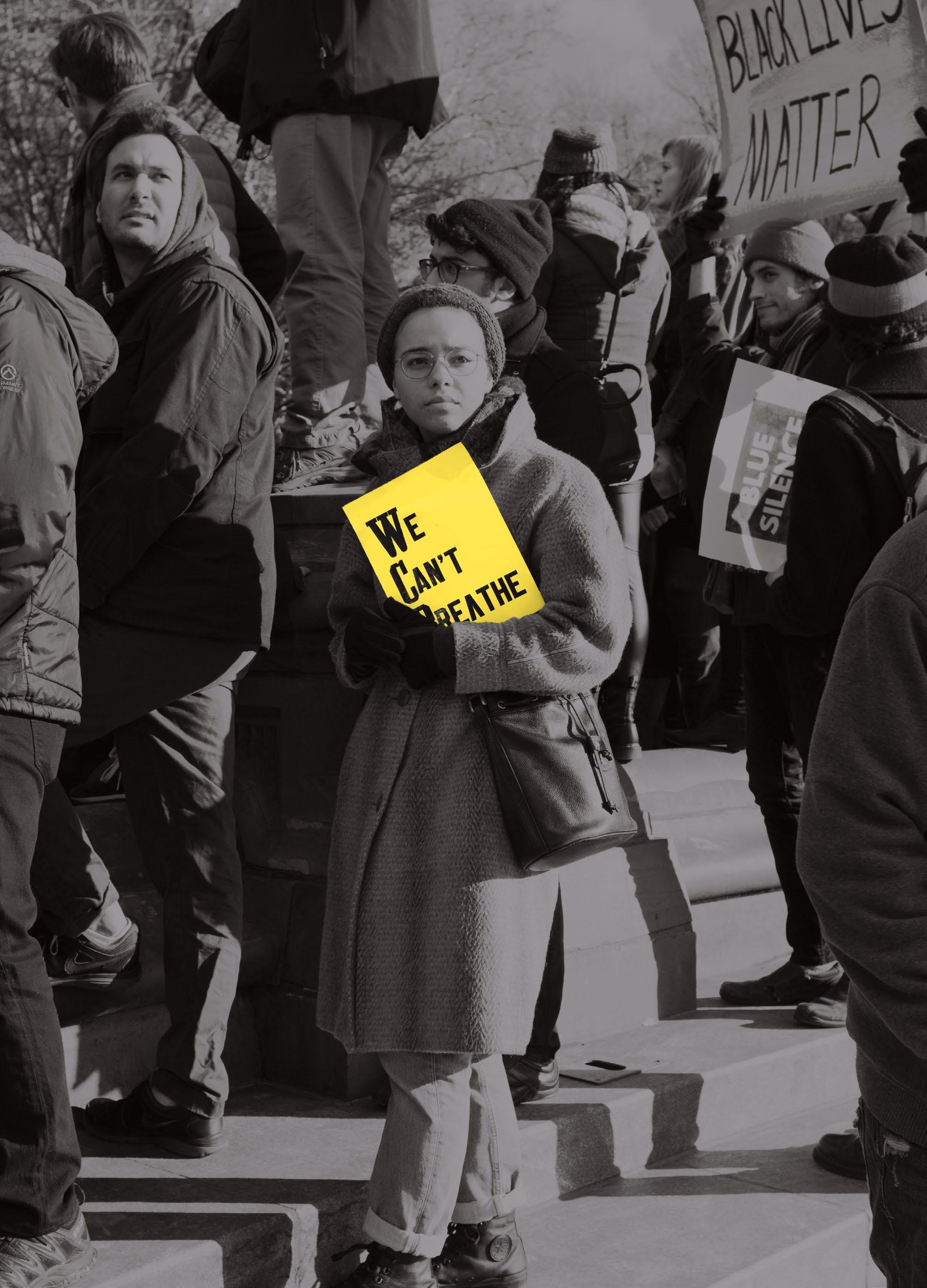


By Ritty Lukose
Many years ago, I conducted anthropological research on youth culture and student politics in southern India. One day, a teacher sat idle (the college was shut down again), watching yet another student demonstration. As they marched by shouting, “Inquilab Zindabad! (Long Live the Revolution!),” she said, “That is not democracy, it’s demo-crazy.”
Her comment is a window into the complex and variegated terrain of a term like “democracy.” It is an idea with a universalizing horizon that has galvanized action across borders and boundaries; contestations over its meaning are at the heart of what we might call the democratic struggle. How should we understand the intellectual and conceptual resources for the emergence of this idea, and how do we account for its circulations? It is also a practice, like the daily demonstrations I saw, deeply embedded in forms of sociality and conflict. How do we understand the
relationship between the practice of democracy and the idea of democracy around the world?
These are some of the questions that guide my teaching. For example, in my course “Imagining India: From the Colonial to the Global,” we take up the notion that India is the world’s largest democracy. What is the relationship between India’s colonial past and its postcolonial democratic experience? Did democracy as an idea come to India from the West? What contributions to democratic thinking and practice did important political thinkers such as MK Gandhi, Rabindranath Tagore, and BR Ambedkar make? How did these thinkers engage cross-cutting intellectual traditions to account for India’s specific cultural, historical, and political traditions while appealing to a universalizing democratic ethos?
In another one of my classes, “Thinking Sex/Gender Globally,” a central focus is democracy and citizenship for gender and sexual minorities
Gianpaolo BAIOCCHI, faculty
David D. BURSTEIN, BA ’12
Bill CASPARY, faculty
Julian CYR, BA ’08
Stephen DUNCOMBE, faculty
Safia ELHILLO, BA ’13
Keli GOFF, BA ’01
Kristin HORTON, faculty
Ritty LUKOSE, faculty
across borders and boundaries. Do feminism and struggles for sexual minorities’ rights emerge in the West and spread to other parts of the world? Or do such political projects have their own traditions, and how do we link those traditions with the circulations of ideas and practices of gender equality and democracy?
“Democracy” is a potent idea, freighted with ideological meaning, backed by powerful armies. It is also taken up by the relatively powerless in their struggles for justice and freedom. Moving between democracy as idea and practice, in classes that examine the history, culture, and politics of the non-West, necessarily entails an invitation to think about how alternative democratic traditions have been forged, shaped by unequal histories of power and inequality. It is also an invitation for students to explore how cultural and historical contexts shape the practice of democracy, however “crazy” it might be.
Meleko MOKGOSI, faculty
Vasuki NESIAH, faculty
Madeleine PERLMUTTER, BA ’18
Gerardo PORTENY, BA ’17
Frank ROBERTS, BA ’04, TISCH MA ’05, faculty
Laura SLATKIN, faculty
Alejandro VELASCO, faculty
Lauren WALSH, faculty
Em WATSON, BA ’16 Photo Essay


“The fight for gender equality needs women and men alike,” says Gerardo Porteny (BA ’17), consultant for Global Youth Engagment for the UN’s HeforShe Campaign, a solidarity movement aimed at helping men and boys become advocates for parity between the sexes. The Gallatin senior, who is studying social impact and marketing in the nonprofit sector, came to the attention of the UN as the founder of Young Minds for Gender Equality, a youth-led nonprofit he established in 2014 that operates in fifty-two countries and is focused on closing the pay gap between men and women in the workforce.
“When I first started getting involved in the gender world,” says Porteny, “I went to conferences and saw women talking to other women who were already convinced of what was being said. I started working to get men involved in these conversations.” Giving men and boys a means to show their support for women has been Porteny’s motivation since he first started advocating for gender equality when he was a teenager in Mexico City.
“Coming from Mexico, I was born in a system in which we have thirty-two federal entities—like states—and there is only one woman governing one of these,” says Porteny.
“When I engaged with gender equality, it was because I understood that we are losing, in this case, the chances of having a good democracy. A democracy cannot be called a democracy without allowing a hundred percent of the citizenship to run. The laws are not discriminatory, per se, but the culture—both in the US and Mexico and I would say anywhere else—is still very biased toward men.”
During an election year that includes the first female candidate nominated by a major political party
for the nation’s highest office, the American citizenry has been wrestling with the prospect of a female president. Porteny’s advocacy speaks to the challenges faced not only by the democratic nominee, Hillary Clinton, but by any woman who seeks a level playing field.
“People think that gender is a complicated thing and that the solution to it is to add things: to add a gender lens or to add a quota system. I think it’s about taking things away: taking away discrimination, taking away hate, taking away ignorance.”


EXPERTS DAVID D. BURSTEIN (BA ’12) AND KELI GOFF (BA ’01) WEIGH IN ON THE SURPRISES OF THE 2016 PRESIDENTIAL ELECTION, WHAT IT WOULD MEAN TO GET THE MONEY OUT OF THE AMERICAN POLITICAL SYSTEM, AND HOW TO RECRUIT CANDIDATES WHO CAN INSPIRE CHANGE. HERE’S AN EXCERPT OF THEIR JULY 2016 CONVERSATION:
Goff: We need to get beyond the labels and see what people are committing to do in terms of public service. Party labels don’t tell you what kind of person someone is in terms of their character. We need to start talking more about who the candidates are as people.
Burstein: This is the business that I’m in. How do you identify and cultivate talent? One of the things that our founding fathers didn’t anticipate—
Goff: That I could vote one day?
Burstein: That’s one. Well, I think some of them did anticipate that. There was a revolutionary mind-set and there was this idea of creating a country in which, if people saw things that were going wrong, they would be able to do something about it relatively quickly. We’ve been stuck, basically in the past thirty plus years, with people feeling like we’re at this paralytic point. What can actually shift any of these paradigms? New leaders need to arise and stand up and say that fixing these problems is more important than their own reelection.
Goff: More good people have to run and we, collectively, as a society, have to make it easier for good people to run. There are so many obstacles to decent people getting involved in the political process, which is how we end up with a de facto monarchy of Bush, Clinton, Bush, Clinton. It’s really expensive to run for office.
Burstein: And getting more expensive every year.
Goff: Right. You have to have money going into the process or have a serious Rolodex. This is why a lot of women who run for office are like Hillary
Clinton—they’re either married to someone who was in office, or their father, brother, or uncle held office. So if you’re a woman of color, you’re already starting at a huge deficit because your grandfather probably wasn’t, say, the governor of Mississippi. If we want things to fundamentally change, we have to change the people at the table making the decisions. We have to convince good people to run and create a pipeline to do it. Both parties spend money on negative attack ads. They could easily earmark $10 million—which they wouldn’t notice!—to support a pipeline program for low-income people we think have the potential to become rising stars in their party.
Burstein: In the corporate world, they spend $75 billion annually on talent recruitment and retention. In politics, we spend zero. It’s not that hard to find good people who would like to run, you just have to go out and ask them. The government is the largest organization in the country, so how does it not have the basic systems that every other institution has to ensure that it has the right people to get the job done? Not only do we have to find and recruit people, but we need to ask them when they want to leave. If someone is coming in to accomplish a goal, once that goal is done, they need to think about cultivating someone to succeed them. And deciding not to keep a seat for 45 years and suffocating a whole generation of leadership.
Goff: I totally agree with you.
Burstein: This is the second time in history when we will go back a generation in terms of who we elect as president. We are about to elect one of the oldest presidents ever at a time when it’s never been more clear that we’re entering a world and an economy that is not grounded in the post–World War II environment, which is where the consciousness and the debate is.
Goff: If there’s one thing I could change about our system to make it healthier, it would be term limits. It’s a way to change things and shake things up—and we’d have new, fresh blood coming into government. To your larger point about getting it right in terms of recruitment, it’s the same thing when we see lack of diversity—say, in the tech world—there has to be a willingness to go beyond the comfort zone in people’s networks.
David D. Burstein (BA ’12) is the CEO and Founder of Run for America, a disruptive post-partisan initiative to break up political polarization by bringing a new generation of talent into American politics. He is the author of Fast Future: How the Millennial Generation Is Shaping Our World (Beacon Press, 2013).
Keli Goff (BA ’01) is the author of two books, a columnist for The Daily Beast, and the host of “Political Party with Keli Goff,” a series featuring interviews with politicians, media personalities, and artists about the issues shaping the 2016 presidential election for NPR–affiliate WNYC.
ARTICLE 21 OF THE UNIVERSAL DECLARATION OF HUMAN RIGHTS (UDHR) heralds the right of a person “to take part in the government of his country,” including “periodic and genuine elections” and “universal and equal suffrage.” In class discussions, it is not long before a Gallatin student raises concerns that democracy promotion often oils the wheels of intervention. From Baghdad to Benghazi, our students came of age in a world where no one launches bombs and enacts regime change except in the name of democracy.
Even when not militarized, armies of technocrats circulate standardized models of electoral arrangements and democratic institutions as if democracy pertains to the science of politics rather than politics itself. This is not “what democracy looks like” to students coming into class after a Black Lives Matter demonstration or a Bernie Sanders rally. If democracy is about status quo–challenging, messy, diverse, and innovative experiments to shape our future, then how can it come packaged in a universal template? If democracy is about “bottom-up” sovereignty, how can it entail institutional arrangements regulated from above by international law?
Inevitably, discussion turns to how international law both empowers and circumscribes our approach to democracy. The human rights framework recognizes self-determination as the prerequisite and foundation for all other democratic rights. However, as the right to self-determination got equated with achieving sovereignty, it tethered democracy’s future to the nation-state. For grassroots social movements, the notion of democratic governance entails a fundamentally existential tension. From France to Turkey to India, elected governments curb dissent in the name of protecting democracy; the performance of popular consent can be invoked to disempower the 99 percent. Moreover, if democratic processes are directed at state power, how do we advance democratic accountability vis-à-vis corporations, banks, or multilateral entities such as the IMF?
Democracy has always been entangled with its converse, including the hierarchies and civilizational discourses regarding the West and the rest. The late-eighteenth-century French and American democratic revolutions were intertwined with colonialism, slavery, genocide against first nations communities, and the disenfranchisement of women, the indigent, and racial and religious minorities.
When the UDHR was adopted in 1948, most of the world’s peoples lived under colonialism. As radical scholars have argued, “provincializing” canonical theorization about democracy entails interrogating these contradictions. Thus students grapple with recognizing the history of democ-
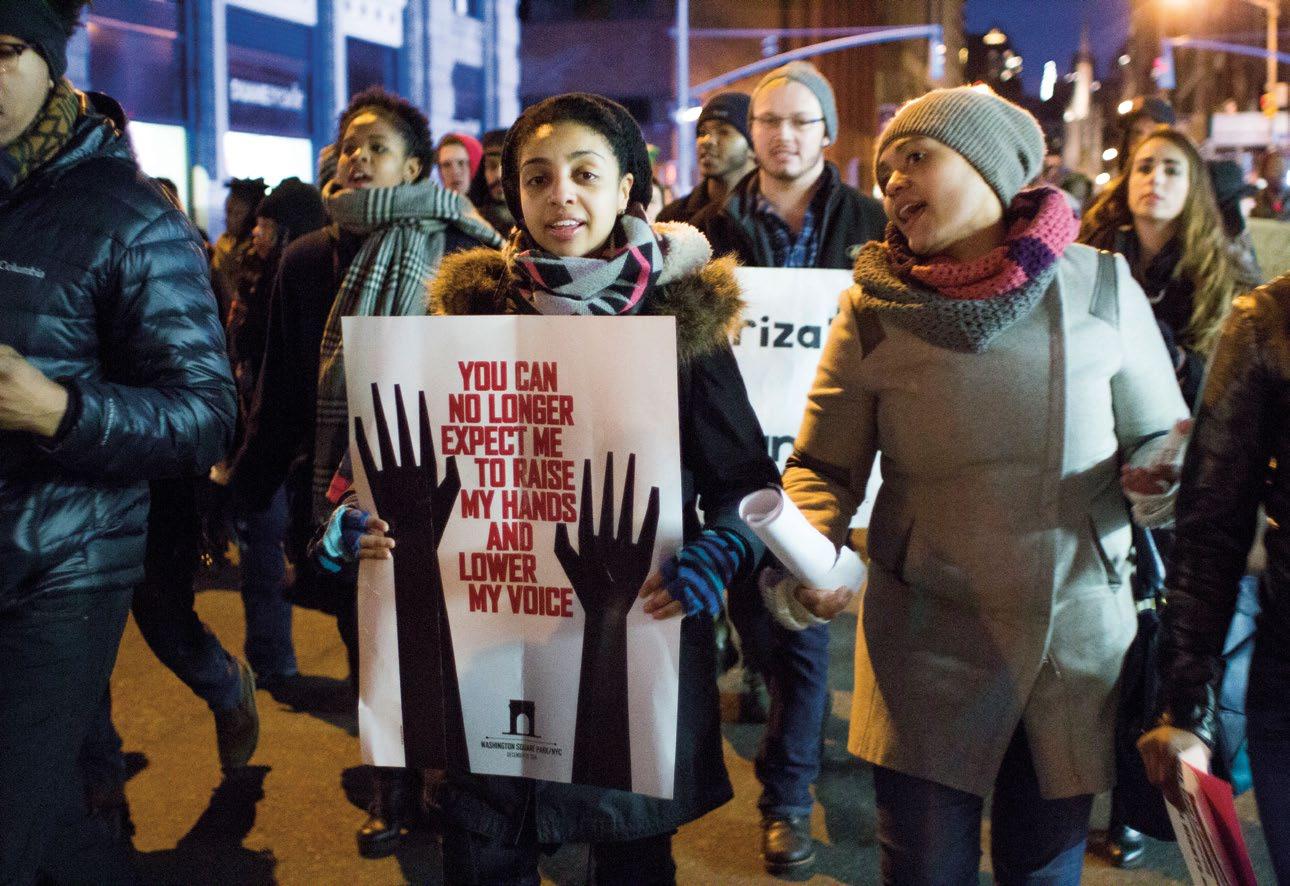
racy as intertwined with “the inheritance of loss,” even as they seek (in their work in and outside the classroom) to imagine a democratic politics against the grain of these inheritances. In short, to rethink the end(s) of democracy.
Past democratic struggles can help inspire this project of political imagination. For instance, Gandhi’s notion of self-rule envisioned democracy as a kind of “enlightened anarchy,” an ongoing process of self-constitution rather than what some have termed “ballotocracy.” Similarly, one can trace alternative approaches in Julius Nyerere’s Ujamaa or in Occupy’s effort to reclaim public space in ways that exceed the authorized institu-
By Vasuki Nesiah
tional avenues of liberal democracy.
Thus, our class engages with rethinking the human right to democracy not as a fixed political arrangement but as an ongoing struggle to further democratize; not packaged for export but to be unpacked and reimagined. As we travel through the arc of this conversation about the intellectual, legal, and political landscapes of democracy, we look at the relationship between Article 21 and other human rights (such as the right to dissent or the right to free association), as well as rights that are not recognized by the human rights framework but should be—“the right to dream,” as the Uruguayan writer Eduardo Galeano put it.

i am afraid that everyone died & it did not fix the world this was meant to be the afterlife to the burning countries our mothers left behind girls with fathers gone or gone missing sistered to dark boys marked to die & our own bodies scarved & arranged in rows on prayer mats we go missing too & who mourns us who falls into the gap we leave in the world
—Safia Elhillo (BA ’13) “self-portrait in case of disappearance” first appeared in Cordite Poetry Review, 2016.
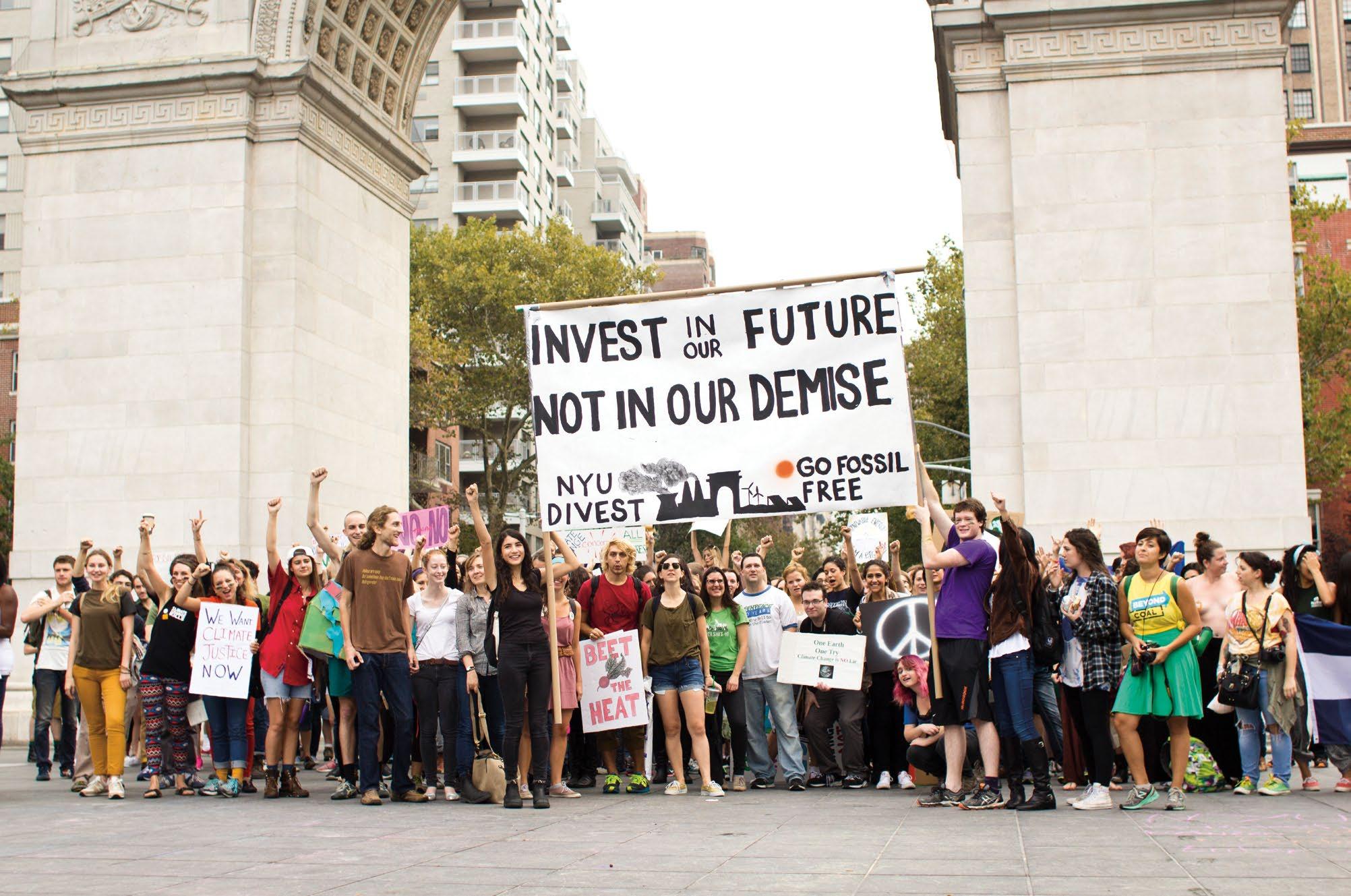
By Bill Caspary
The recent presidential primary election campaign has underscored the degradation of American political discussion. Considerable research portrays citizens who reject ideas that disagree with their own but imbibe biased information and misinformation that supports their prior views. Indeed, they actively pursue whatever media will lend apparent confirmation. They are willing seekers of biased information, not simply victims of manipulation.
When educators seek to address this problem, the first reflex is courses in critical thinking— analysis of arguments and evaluation of evidence. As desirable as such skills are, certainly an advance over rote learning, their effectiveness is limited. Critical thinking too often becomes a sophisticated technique to discount other people’s ideas while exempting one’s own views from scrutiny. Recently, political psychologists have (belatedly) recognized the deep emotional roots of this resistance to other views. The urge toward “affective congruence” is heavily implicated.
By Madeleine Perlmutter (BA ’18)
Educators have addressed this emotional dimension through social and emotional learning curricula (SEL). Though the introduction of SEL often arises from other motivations, like preventing bullying, it lends itself to reducing the emotional barriers to reasoned discussion. Perhaps the presence of both critical-thinking instruction and SEL curricula in our schools would do more to make up the deficits in the conduct of public discourse among citizens than either one by itself.
John Dewey’s educational theory suggests a pedagogy that contains critical thinking and SEL, and adds further dimensions, which are potent for educating democratic citizens.
First, Dewey’s central concept, in relation to reasoned discourse, is not argument and evidence alone. It is inquiry, which includes critical thinking, but also problem posing, exploratory experimentation, reconceptualization, evidence gathering and sifting, and hypothesis formation. Inquiry learning, rather than evoking defensiveness by challenging existing views, raises new questions and reframes existing constructions of experience. It sidesteps the sources of motivated reasoning and opens up
unique possibilities of growth and change in students’ understanding of the world.
Second, for Dewey, inquiry is to be conducted in groups. In the regular course of a day’s activities, there will be small disagreements. Students will learn, under the teacher’s guidance, to listen to one another’s views and to resolve differences. When differences arise on serious issues of inquiry, the students will have acquired the disposition as well as the skills to view this as an opportunity for learning.
Third, for Dewey, emotion is an intrinsic feature of all experience. Inquiry itself is an activity fraught with emotion, so inquiry learning, group learning, and emotional learning can be combined in a rich and efficacious synergy.
Much of the Gallatin education can be seen as this sort of inquiry learning. This cannot be said of most secondary and primary education. We are beginning to recover, however, from our temporary intoxication with standardized testing and consequent rote learning. We should seize this renewed opportunity for fostering inquiry learning and building a competent democratic public.
Political theorists emphasize the importance of citizen involvement within a democracy, but when looking at local versus federal control in education, it’s vital to examine examples of both citizen participation and governmental leadership. In Gianpaolo Baiocchi’s interdisciplinary seminar “Expertise and Democracy,” our class broke into groups to investigate where expertise and democracy overlap and the key ideas surrounding local issues with democracy at risk.
My group considered a case in the Vinegar Hill and DUMBO neighborhoods of Brooklyn, in which the New York City Department of Education proposed a school rezoning that would send students from PS 8, an overpopulated school, to PS 307, a nearby underenrolled and low-performing school. This rezoning proposal brought into question how much of a say parents should have in their child’s education or if decisions about which school a child should attend should be made solely by the city government. It also reflected the socioeconomic and racial composition of the schools, since PS 307 primarily served a population of students from low-income housing projects and PS 8 served a wealthy and racially homogenous group of students.
Students learn best in diverse learning environments; with that in mind, the DOE moved forward to rezone PS 307 and to integrate the two student populations. In so doing, the DOE ensured that these New York City students will receive a quality of education that includes peers with differing life experiences.
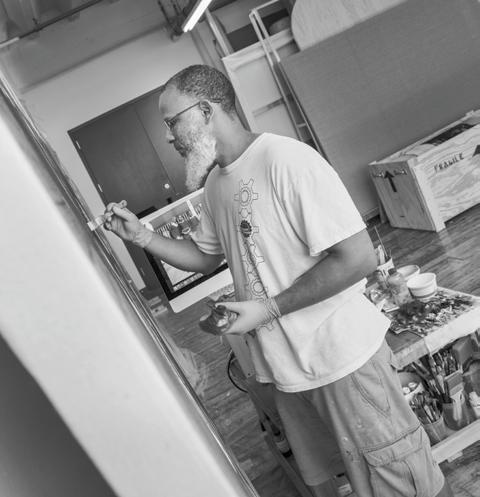
In the fall of 2016, New York’s Jack Shainman Gallery presents the work of internationally renowned African artist and Gallatin faculty member Meleko Mokgosi in his first New York solo show.
First exhibited at Boston’s Institute of Contemporary Art in 2015, Democratic Intuition aims to ask questions about how one can approach ideas of the democratic in relation to the daily lived experiences of the subjects that occupy southern Africa. In dealing with this material, Mokgosi focuses on the ways in which democracy can be thought of as both something that is inscribed within the individual from various institutions and something that is partly intuitive or self-taught through processes of socialization and intersubjective exchange.
“I’m always looking at theory and history,” Mokgosi told Interview magazine. “At its most basic, the project is about how normal people understand, reciprocate, have access to, and do not have access to the ideas of democracy and the democratic . . . I’m thinking about things like education, things like gender, sexuality, ethnicity, nationality. And even just the nation-state—who has access to the nation-state and who doesn’t?”
Mokgosi’s series of large-scale paintings will be on display at Jack Shainman Chelsea Galleries through October 22, 2016.


ON THE APOLOGY OF SOCRATES BY PLATO AND BETWEEN THE WORLD AND ME BY TA-NEHISI COATES
SELECTED FROM GALLATIN FACULTY
MEMBER LAURA SLATKIN’S REMARKS FOR BA CONVOCATION 2016
It’s no accident we begin our time together in community reading two powerful texts about democracy—one from the fifth century BCE, the other from last year. Socrates and Ta-Nehisi Coates, two sons of democracy/democrats, of very different stripes, challenging their communities, their standards of authority, their account of themselves, the way they reproduce themselves—their norms and values—particularly through regimes of education. It may seem a long distance from Socrates to Coates: they write out of and into different communities and contexts. Yet both pursue the difficult path of self-examination and critical dialogue with others.
As part of the reforms that led to the creation
of the extraordinary innovation that was democracy in Athens about forty years before Socrates was born, it was established that any citizen could bring a charge against another in the case of “things that are bad for the community,” and this was how Socrates was brought to court on a charge of impiety—graphê asebeias This was very likely the first time a person was taken to court for his beliefs or for his speech, rather than his actions.
It bears repeating that “apology” is the technical term for the speech by a defendant in a court case, in the legal system of democratic Athens in the fifth and early fourth centuries BCE. Literally, it means a speaking out—nothing whatsoever to do with “I’m sorry.” It was a requirement of Athenian law that defendants in lawsuits represent themselves, but they could— and typically did—have their speeches written for them by professional speechwriters. But Socrates preferred to speak for himself. One of the most famous orators of his day did write a speech for him, but he declined to use it, saying it was “too beautiful.”
Socrates addresses the jurors (and others present in court) as his fellow citizens. He speaks precisely as a citizen, one who has long annoyed various authorities but one who has also long been centrally aligned with the project of Athenian democracy. The only citizens of Athens were free-born males above the age of eighteen, and after a certain point it became a requirement for citizenship to be the son of two Athenian parents—so not everyone was included. Still, the Athenian political form that established that citizenship was celebrated (and sometimes decried) as a great innovation, dispensing with kings and aristocratic clans, and insisting on the free and open and active participation of all citizens.
But Socrates speaks at a moment of particular, acute fragility in the democracy. Athens had been defeated a few years earlier in its decadeslong war with the city of Sparta, following which Sparta had installed a brutal, murderous oligarchy consisting of men who came to be known as the Thirty Tyrants. At the time of Socrates’s trial, that regime had recently been
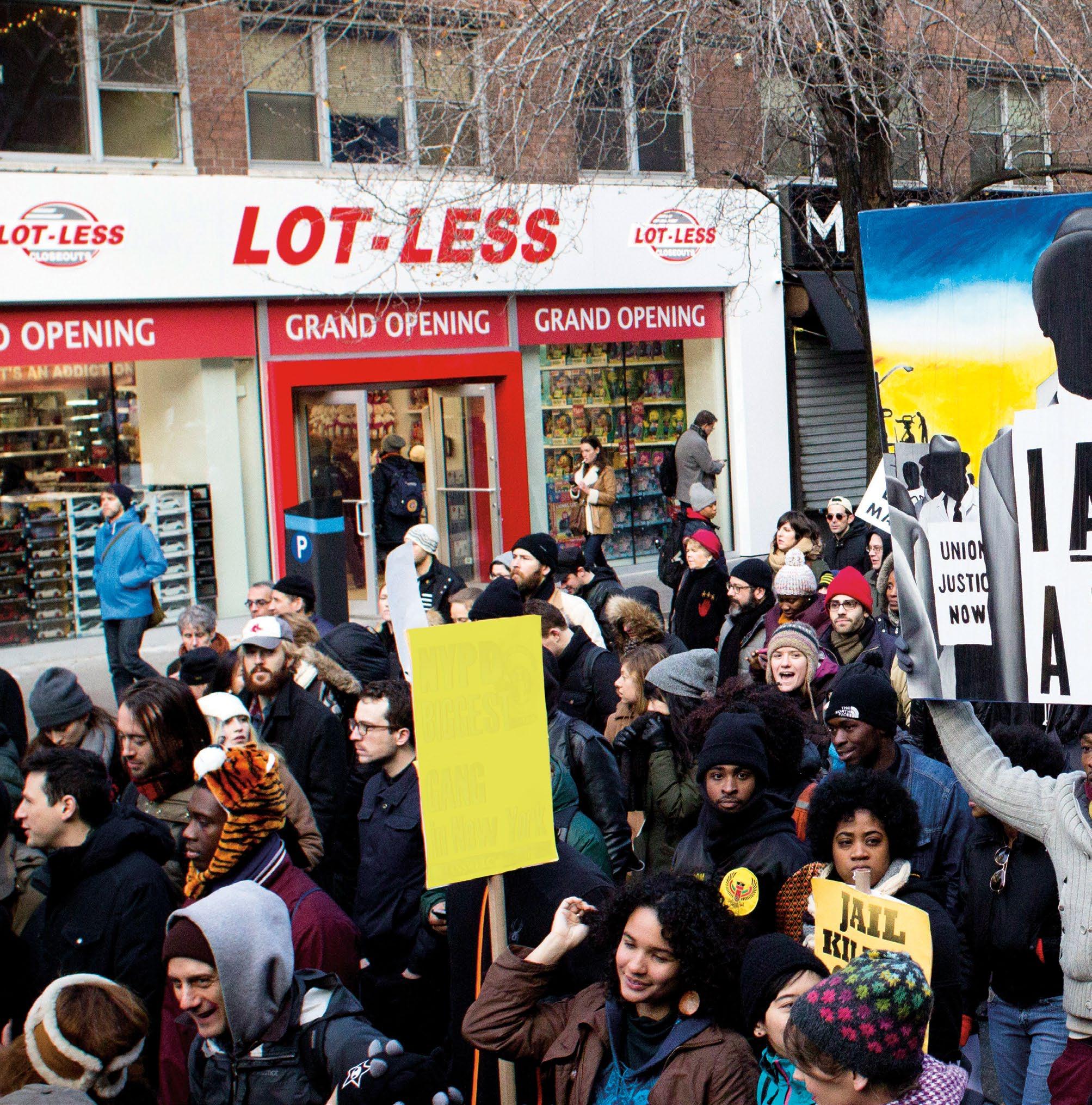
overthrown and democracy perilously restored. So a “gadfly on the horse of the state,” as Socrates calls himself, wasn’t exactly what most Athenians thought they needed. The polis—or city-state—had been endangered from inside and outside—most visibly from outside by the Spartans, but just as damagingly by the terror brought about by the regime of the Thirty. The democracy had been restored—but at great cost. Thus Socrates’s continuing public inquiries and challenges were felt as a particular affront: Couldn’t he just leave things alone?
Now, Socrates speaks from within; it is worth thinking about what that perspective affords him—a critique from within, of the community. This is part of the force of his refusal of the option of exile: it was legal practice to propose a penalty for oneself, and exile was often what defendants opted for. But Socrates’s whole philosophical project depends on the political community within which and at times against which he individuates himself. The true philosopher, from a Socratic standpoint, remains in the community where he teaches, and lives out with others the effects of his teaching. Socrates’s Apology is, among other things,
then, a mediation on belonging—what it means to belong to a democratic community, to refuse expulsion from it, to challenge its very foundations, to become, with profound irony—the irony Socrates himself so brilliantly practiced—perhaps its most famous citizen in history. Athens may not have wanted Socrates, but Socrates insisted he belonged to Athens and made by his death the extremest legal and juridical point of belonging he could: a freely chosen belonging. At no point does Socrates doubt his status as an Athenian citizen; he rebuts or ironizes every charge against him; he does so from within the polis and its own established mechanisms and discourse—a discourse he was in fact transforming from within.
Coates writes from a differently diagnosed place—as a member of a group long “at the bottom of the well” of the nation (quoting Derrick Bell). Coates may be at best ambivalent about the project of “America” and of “democracy,” yet also says he calls America to account precisely because of its long history of claims that it is “exceptional.”
The idea that the unexamined life is not worth living recovers, in the context of Socrates’s Apology, its original force as a powerful challenge and
question: an unanswerable one, because it must be lived out. And certainly this is one point of entry into Coates’s essay: its beautiful tracking of the way one young man has undertaken a richly examined, intellectually probing life. His examination unfolds in dialogue with, and sometimes in opposition to, his parents, his reading (not least of Malcolm X), formal education (in benighted schools and then transformatively at Howard University), and ongoing conversation with peers, friends, and enemies—the fruits of which examination he wishes to share with his son, and implicitly of course with any reader.
Both works ask, what is the relation of citizen to community, and both speak to the pleasures and pains of belonging: Who can afford to belong? to what? and at what cost?
We who teach, study, and work here all belong to the Gallatin community: what that is, what it becomes, what it obscures, what it costs, what it enables is something we discover, we make, we experience—together. Let’s hope that individually and collectively we can do what Jesmyn Ward calls for in her new edited anthology, The Fire This Time: “To discover a new type of belonging.”

“BOTH WORKS ASK, WHAT IS THE RELATION OF CITIZEN TO COMMUNITY, AND BOTH SPEAK TO THE PLEASURES AND PAINS OF BELONGING: WHO CAN AFFORD TO BELONG? TO WHAT? AND AT WHAT COST?”
FRANK ROBERTS ON TEACHING AN EMERGING MOVEMENT
Racism arrests the development of American democracy,” says Gallatin alumnus and faculty member Frank Roberts (BA ’04, TISCH MA ’05). In the fall of 2016, Roberts will teach his third iteration of a course that has kept pace and evolved along with the Black Lives Matter movement and seen the lead up to the 2016 presidential election. “With Black Lives Matter,” says Roberts, you have young people who are saying that the millennial generation will be the generation to finally dismantle this hurdle to realizing the uniqueness and potential grandness of the democratic experiment.”
Black Lives Matter (BLM), a political movement that began as a hashtag, has grown to be a dynamic—and sometimes contentious— modern civil rights movement. Erupting in response to the 2012 murder of African American teenager Trayvon Martin and the acquittal of the man who killed him, BLM has gained momentum in the years that have followed in the wake of other recent shooting deaths of African Ameri-

cans, often at the hands of the police.
The idea for developing a course on the movement emerged when Roberts was teaching “Race, Ethnicity, and Popular Culture.” He wanted to bring together some of the concerns that he and his students had about how the media shapes narratives about race and inequality and how it can be anchored to a particular moment. Since 2014, Roberts and his students have tracked not only the movement and the events that gave rise to it—as recent as the summer 2016 deaths of Alton Sterling and Philando Castile—but also how these have been covered in the media.
“It is not coincidental that Black Lives Matter emerged in the context of a black president,” notes Roberts. “One might argue that the height of the racial tension that we saw in the United States in past years was a backlash and response to Obama’s presidency. Students need to see how this movement all connects to this larger story of what it was like for this nation to live in Obama’s America, an age that is coming to an end.”
Into the classroom, Roberts has brought not only pop culture but also critical figures from the BLM movement to speak with students, including Dr. Cornel West, activist DeRay Mckesson, VH1 Host Marc Lamont Hill, New York Daily News Senior Justice Writer Shaun King, and 2008 Green Party Vice Presidential Candidate Rosa Clemente, among others.
“We are witnessing a profound democratic reawakening in the United States,” says Roberts. “Black Lives Matter is the most important and influential US social movement in the past forty-five years. It speaks to a long tradition of members of the African American community taking the lead on forcing the American democratic project to actually reach its ideal.”
For more on Frank Roberts’s Black Lives Matter” course, see the #BlackLivesMatter syllabus: http://www.blacklivesmattersyllabus.com.
“WITH BLACK LIVES MATTER, YOU HAVE YOUNG PEOPLE WHO ARE SAYING THAT THE MILLENNIAL GENERATION WILL BE THE GENERATION TO FINALLY DISMANTLE THIS HURDLE TO REALIZING THE UNIQUENESS AND POTENTIAL GRANDNESS OF THE DEMOCRATIC EXPERIMENT.”
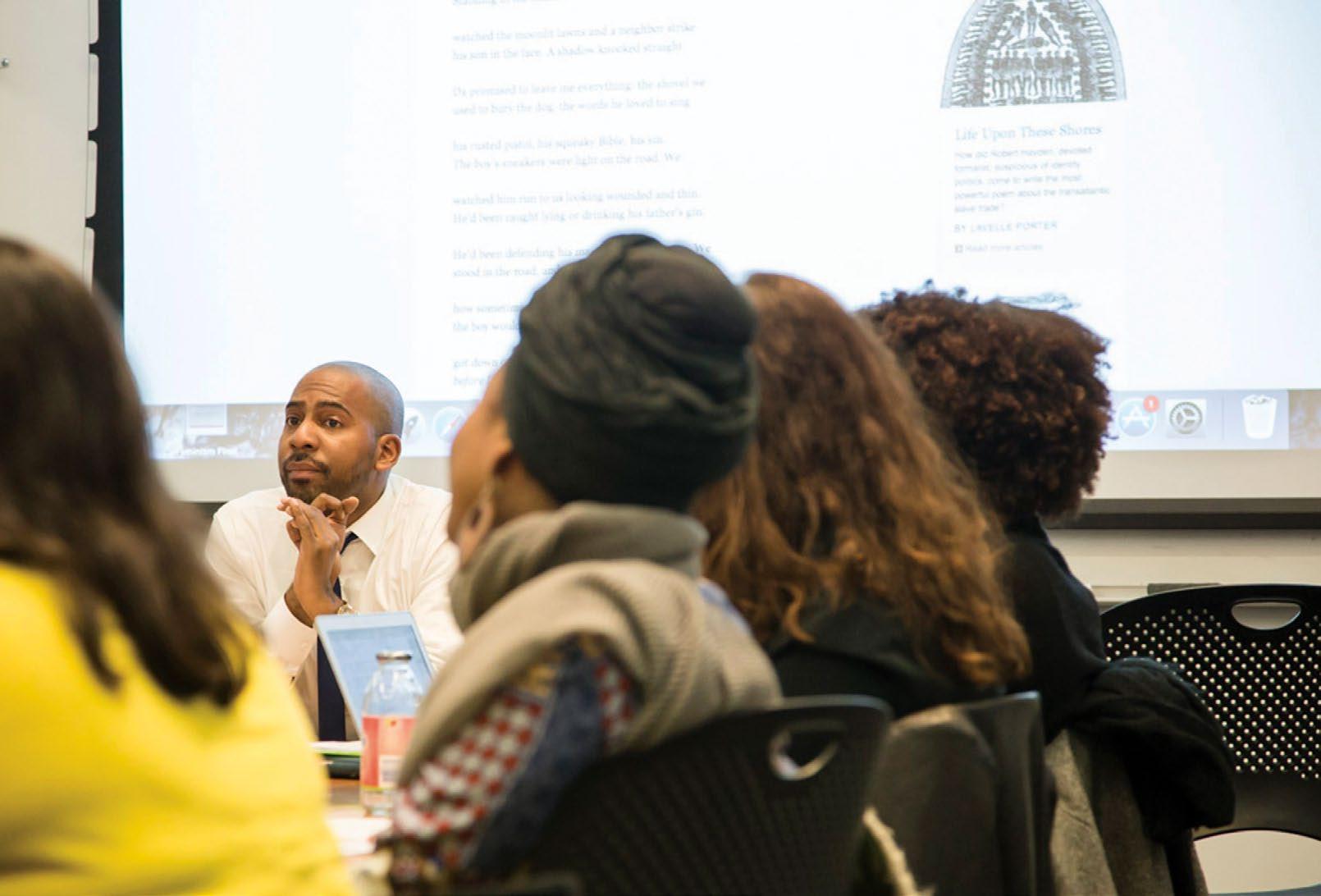

These photographs, both of which were taken by award-winning photojournalist Ron Haviv (NYU CAS ’87)—one in Panama in 1989, the other in Bosnia in 1992—are the focus of a book project and corresponding documentary film that are being created by Haviv and Gallatin professor Lauren Walsh. Biography of a Photo, their collaborative endeavor, tells the life stories of the images, weaving a narrative that shows how they have helped to shape the history, memory, and cultural fabric of entire populations.
The Panama photo, taken during General Manuel Noriega’s dictatorship, was reproduced widely in the US and internationally but was not published in Panama at the time it was taken. Considered seditious material, the image was officially suppressed; anyone in possession of it could be subject to arrest. Even so, the image became widely known inside Panama and spread around the country via underground channels.

Seven months after it was taken, President George H. W. Bush referenced the photo in his 1989 address about the US invasion of Panama. In so doing, he linked that image to a longer traumatic timeline, encompassing not only the Noriega dictatorship but America’s brutal invasion of the country. The legacy of the photo carries forward to the present, where it has begun to resurface as part of a debate on whether to recall and teach the harrowing period of Panama’s history that the image broadly represents.
The Bosnia photo has also had an incredible journey. The term “ethnic cleansing” was created to define acts like those depicted in Haviv’s photograph. Taken just days before the official start of the Bosnian War, the image captures a war crime. The work was used at the International Criminal Tribunal for the former Yugoslavia at The Hague in the indictment of Serbian commander Arkan and, most recently, in the
trial that resulted in the conviction of Bosnian Serb political leader Radovan Karadžić
Each photograph is a potent symbol of the past that has carried into the present and continues to operate with great resonance, moving into the future of both countries. In their work, Walsh and Haviv will bring to life the stories of two enormously influential photos and explore, in a new manner, the behavior of iconic images—how they age with time and inform cultural-political realities.
“CARACAS IS LIKE MANY CITIES IN LATIN AMERICA, AND THE WORLD: AN UNEASY AMALGAM OF HIGH-RISES AND SQUATTER SETTLEMENTS BORN OF LONG HISTORIES OF UNEVEN URBANIZATION
AND INEQUALITY. AND MUCH LIKE THE LANDSCAPE, POLITICS HERE REFLECTS A MESSY BLEND OF THE FORMAL AND INFORMAL, WHERE STAID ELECTORAL POLITICS AND CONTENTIOUS, OFTEN ILLEGAL PROTEST COEXIST AS LEGITIMATE FORMS OF EVERYDAY ENGAGEMENT. FAR FROM EXCEPTIONAL, THIS MESSY, UNRULY INTERPLAY IS
THE ESSENCE OF
DEMOCRATIC
LIFE.”
—ALEJANDRO VELASCO, BARRIO RISING
By Stephen Duncombe
There is always a power dynamic in the classroom, no matter how open or democratic or progressive the class is. In the end, the instructor is choosing the topic, selecting the material, creating the syllabus, guiding the discussion, and giving the grades—even when it is the instructor’s decision to open up the decision–making process to the students. We can never do away with power, and to pretend to do so is pedagogically dishonest. What I try to do, however, is bring those dynamics out in the open and demonstrate how power operates in everyday situations, particularly when it seems to be absent.
Case in point would be class discussions. I
tend not to lecture much in my classes, preferring instead to lead students through discussions so that we can arrive at conclusions together. Students enjoy this, I enjoy this, and it appears as if knowledge and power hierarchies in the classroom have been flattened. In some ways, they are. But then I ask students what is a more effective way to wield power: Is it through the open use of force and insisting upon a correct answer or response? Or rather by convincing people that they are the ones in control, and that whatever conclusions arrived at are truly their own—while at the same time setting the parameters of the discussion? The students come to
realize that the latter—what Walter Lippmann called the “manufacture of consent”—is far more effective, and it is also, not coincidentally, the very model we have been using in the class (a conclusion which, of course, is partly manufactured itself).
My goal is not to create cynical students, nor to depress them by revealing that even when we think we are at our most free we are really being coerced, but to foster an understanding of how power works, even in a classroom, so we can move forward: reading, analyzing, discussing—but to do so self-aware, and in doing so maybe even discover new forms of freedom . . . and power.
One of the most vital Gallatin connections made by Cape Cod native Julian Cyr (BA ’08)—and one that would later serve him well in his nascent political career—was forged not while he advocated for LGBTQ health nor as a student government representative, but instead over a plate of fries at the Broadway diner and NYU late-night standby, the Famous Cozy Soup ’n’ Burger.
“One of my earliest friends at Gallatin was Sarah. We were both from Massachusetts and became fast friends in a Gallatin seminar about Broadway during our first semester. One night in 2006, we were having a late dinner and I started talking with her about a candidate who was running for the governor of Massachusetts whom I
loved: he was progressive and African American and even had a gay theme song—Heather Small’s ‘Proud.’ Sarah stopped me to tell me that I was talking about her dad, Deval Patrick.”
It wasn’t until much later that Cyr ended up working for then–Governor Patrick and learning about the ins and outs of the Massachusetts legislature, his first foray into state politics that would later give him the idea to run for State Senate himself.
“I got a good grounding in politics at NYU as an LGBTQ peer educator and through my work in student government as a student senator,” says Cyr, but he also credits his time at NYU with showing him the value of being in the room where it happens.
“In our representative democracy, showing up counts for a lot more than people think,” says Cyr. “There’s a perception that government is impossible to decipher and that the attention of elected officials is hard to get. I’ve found that navigating our system is in many ways about building relationships—by showing up, you build a relationship with decision makers who, once they know you, are more likely to help if they can.”
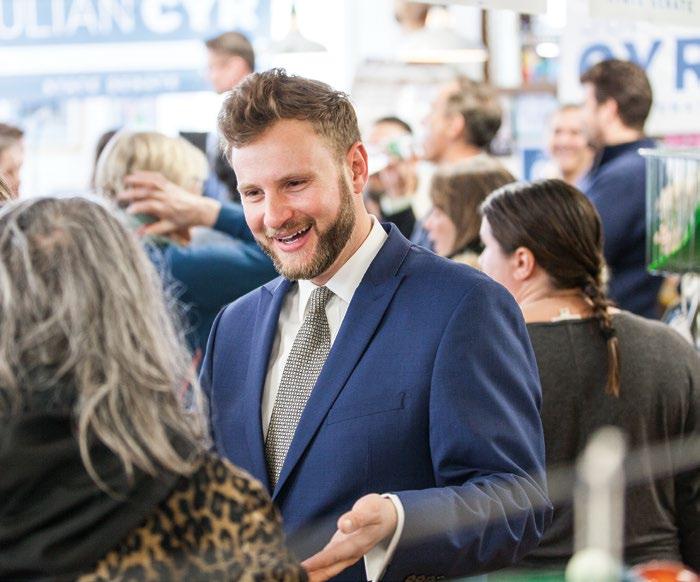

By Gianpaolo Baiocchi
In the early 2010s, the issue of urban democracy dramatically took center stage around the world in the form of protests and occupations of prominent public plazas. From Tahrir Square to Zuccotti Park, to Spain’s Indignados in Madrid’s Plaza Mayor to the free-fare movement in São Paulo, a new generation of activists has taken to the streets to reclaim democratic institutions and urban rights, including the right to shelter, livelihood, mobility, assembly, and control of the urban form. At the time of this writing, Black Lives Matter in the US is only the latest and most dramatic of these movements, resisting a vision of exclusive and racist city spaces.
The question before both activists and urban scholars is, what next? Activists no doubt have a clear vision of what they do not want—elite cities defined by displacement, police violence, gentrification, economic precariousness and poverty, and environmental degradation and injustice. But what are these new visions and models emerging—what might truly democratic cities look like for today
and tomorrow? And how likely are these alternatives in today’s contexts, where cities are in many ways more challenged—more unequal, more exclusive, more segregated, and more environmentally vulnerable—than ever?
It is not just social movements that have been drawing interest to cities. We are living through a time of intense and renewed interest in cities. After a generation of disregard, cities have become popular once again as destinations for people and businesses. Yearly there are dozens of conferences and forums worldwide dedicated to urban futures. Cleaner, safer, more walkable, and greener cities utilizing the latest technologies, in this view, will provide the setting for constant innovation and creativity.
Not often talked about in these discussions, though, are the harsh realities for most urban residents. Greener cities often displace the poor, and smart technologies are often closely linked to surveillance of “undesirables.” Nicely designed buildings will not, by themselves, solve the housing crisis, just as inviting public spaces will not solve the epidemic of police violence. Also missing is the
question these social movements have been asking: What is the role for democracy in determining the future of our cities? Whether we are talking of cities of smart buildings, or of affordable housing and climate change adaptation, what role will people play in determining their fates and imagining and realizing more just cities?
There is an important space somewhere between these two poles—a grassroots, activist imagination in search of proposals, on one side, and a technical vision devoid of people and politics, on the other. The Urban Democracy Lab was founded in 2014 with the goal of filling in this gap, even if in the end, the question of what next? is probably unanswerable in any kind of definitive way. Advances beget new goals as well as setbacks, and the direction of change is sometimes confusing. Issues force themselves on situations in unpredictable ways. To be a protagonist for urban justice today means, more than advocating particular platforms, developing a kind of intellectual flexibility and the ability to listen and learn that we try to foster. Urban democracy, like democracy, is a moving target.

Part theater, part community building, The Five Boroughs/One City Project launched in the winter of 2014 when the Working Theater commissioned five collaborative artistic teams to create a piece of theater for, inspired by, and in response to a specific community in each of New York’s five boroughs.
Director and Gallatin faculty member Kristin Horton and playwright Chisa Hutchinson (The Gift, Dead and Breathing) have created an interactive theatrical event, Breaking Bread, that explores family, commu-
nity, social justice, and food on Staten Island. Conceived in the wake of the death of Staten Island resident Eric Garner and the grand jury decision to not indict the New York City police officer accused of his death, the project aims to foster an open conversation about racial perceptions and stereotypes.
In both content and form, Breaking Bread is designed to disrupt inherited notions of social and cultural hierarchy. The participatory performance invites the audience to an intimate dinner with an Italian American
family during which the daughter arrives with her African American boyfriend, but in a formal twist the Italian Americans are played by African American actors and the boyfriend is played by an Italian American actor.
In the spring of 2016, the project received additional funding from the National Endowment for the Arts to support its continued development. The theatrical event will be presented in Working Theater’s 2017–18 season and will travel to all five boroughs.
FALL 2016—ZAHIA RAHMANI
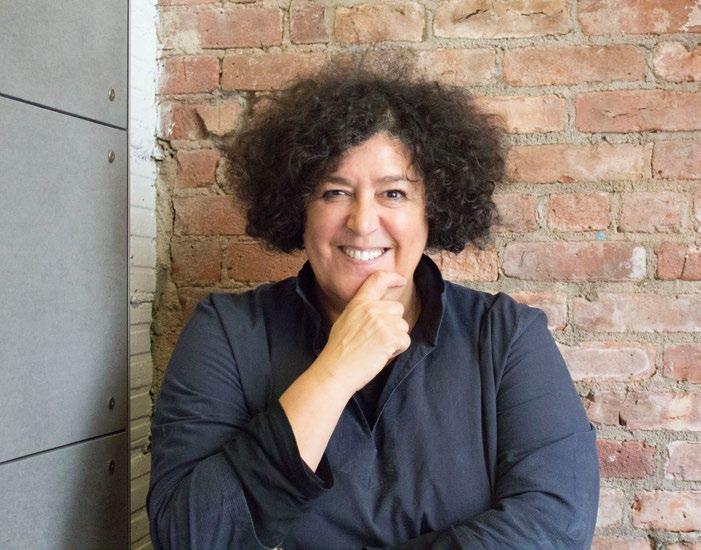
The Algerian-born academic and author Zahia Rahmani is one of France’s leading art historians and writers of fiction, memoirs, and cultural criticism. The French Ministry of Culture named her Chevalier of Arts and Letters and as a member of the College of the Diversity. As an art historian, Rahmani is director of the Research Program on Art and Globalization at the French National Institute of the History of Art (INHA), an interdisciplinary program that focuses on contemporary art practices in a globalized world and links many networks in France and abroad.
Rahmani is the author of a literary trilogy dedicated to contemporary figures of so-called banished men: Moze (Sabine Wespieser Editions, 2003); “Muslim” Novel (Sabine Wespieser Editions, 2005); France, Story of Childhood (Sabine Wespieser Editions, 2006). The US edition of France, Story of Childhood was published by Yale University Press in 2016.
As part of the Global Faculty-in-Residence Program, the School hosts several visiting faculty members each year who will share their international perspectives on pressing social, political, and intellectual issues.
TWO SOPHOMORES AND TWO JUNIORS WILL BENEFIT FROM THE YEAR-LONG PROGRAM
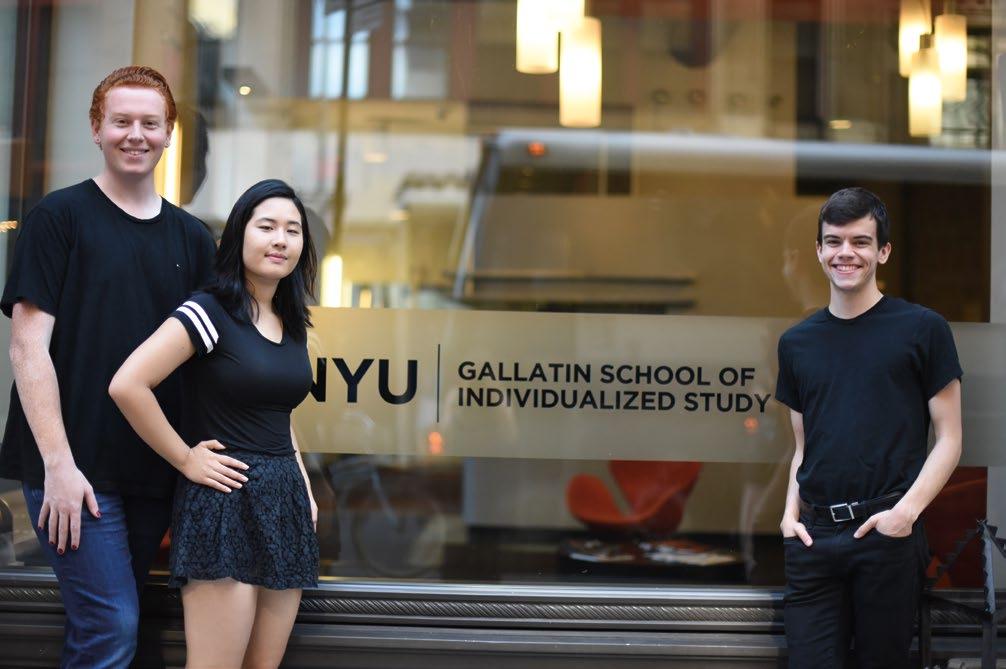
From Washington Square to Red Hook, the annual Big Walk gave students, faculty, and staff time to explore two boroughs and several city neighborhoods. Led by Professor Louise Harpman, the Gallatin Design Collective, and the Urban Democracy Lab, this year’s path included the Lower East Side, Chinatown, the Brooklyn Bridge, and Brooklyn’s own Brooklyn Heights and Red Hook.
The walk included several noted guest lecturers, including Karen Holmberg, an archaeologist and expert on geological erratics, who talked about Collect Pond and the failed attempts to build on an active waterway; Stephen Fan welcomed us to the Museum of Chinese in America and spoke about the interlocking “networks” that link Chinatowns throughout the boroughs of New York and up and down the East Coast; Sally Young spoke about the work of the Bowery Alliance of Neighbors and her particular interest in two Federal townhouses and their abolitionist owners. Young also identified a rare map that shows the ground underneath the current New Museum was an African burial ground.
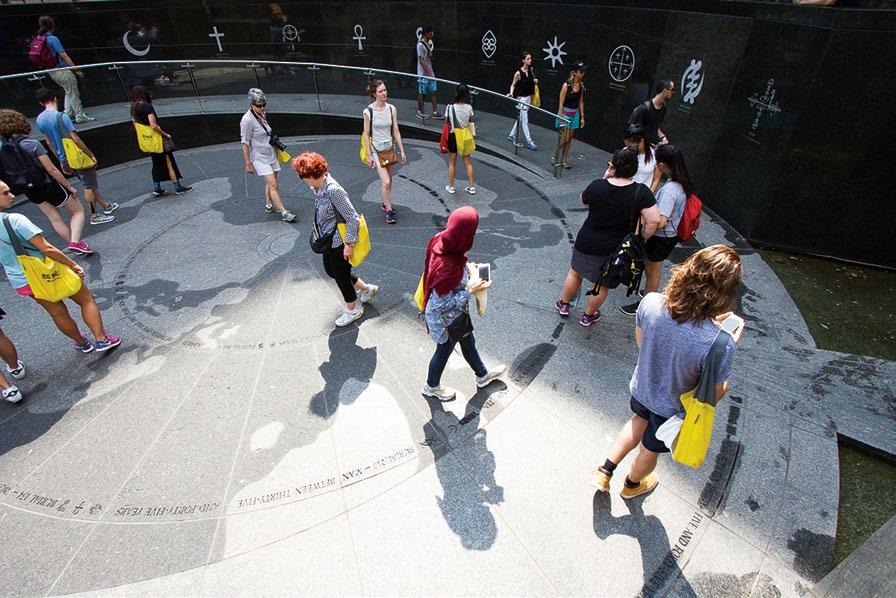
Gallatin is well represented in this year’s cohort of NYU Leadership Fellows, with sophomores Connor Borden and Areerat Worawongwasu and juniors Emily Bellor and Patrick Bova joining a group of 24 NYU students who have been selected as fellows based on their potential to lead, their ability to collaborate across difference, and their commitment to learning and growth.
“I’M GRATEFUL THAT SUCH A PROGRAM EXISTS AT NYU THAT ENCOURAGES STUDENTS INDIVIDUALLY—AND WITHIN A GROUP CONTEXT—TO BUILD A BETTER SENSE OF THEMSELVES AS LEADERS AND TO WORK WITH OTHERS AND COLLABORATE.”
Their concentrations range from global public health and international labor policy (Borden) to the practice of artistic activism (Bellor) to art history, visual studies, and social change through the arts (Bova) to sustainable development and human rights (Worawongwasu).
Over the course of the academic year, the fellows will participate in leadership workshops, work one-on-one with a leadership coach, and complete a team challenge to practice skills transferable to other leadership activities and careers. A year-long leadership development program, the NYU Leadership Fellows Initiative is designed to empower undergraduate students with the skills that will allow them to work collaboratively to turn what they envision into action.
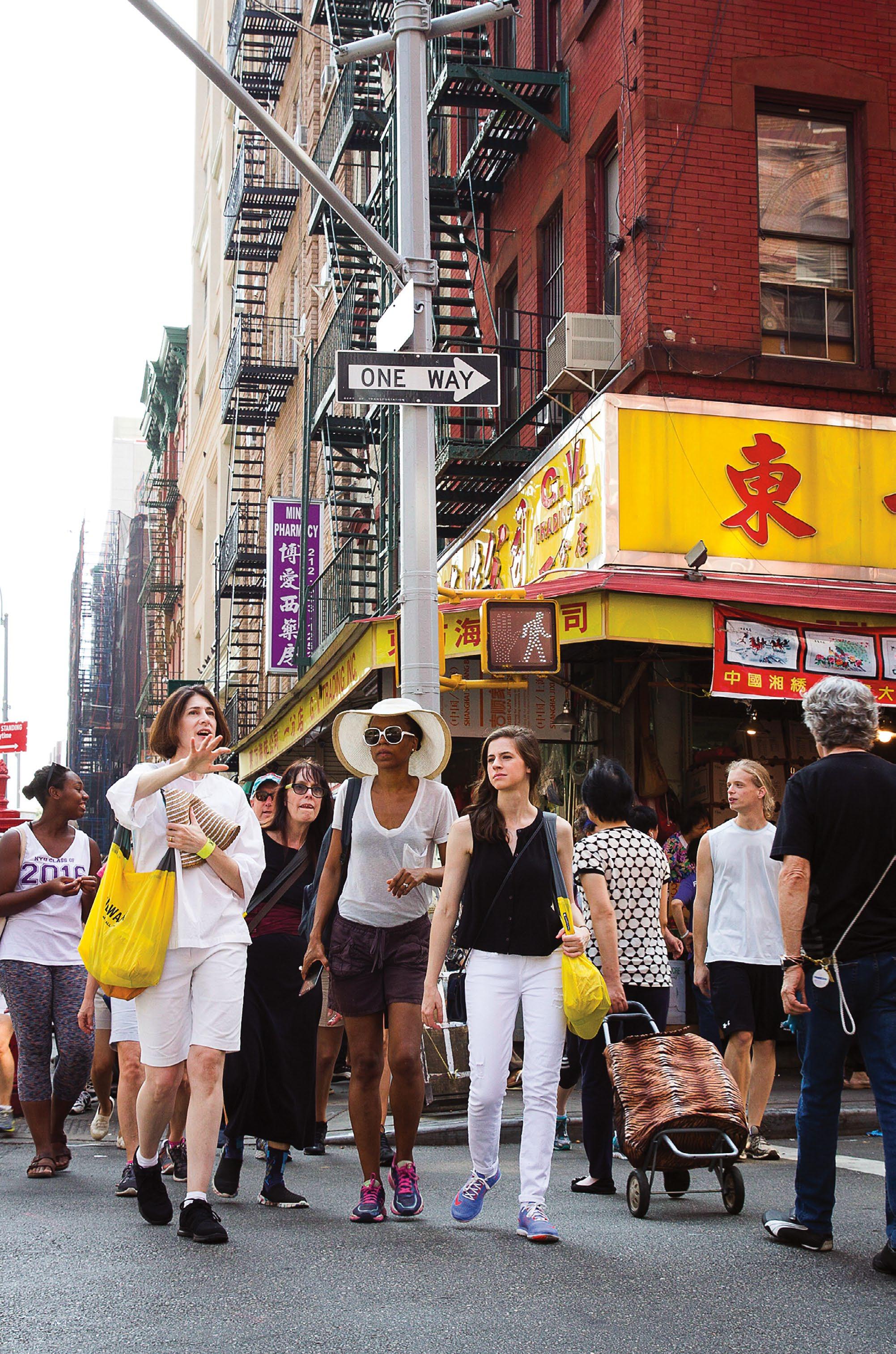
“ONE OF THE GOALS OF EVERY BIG WALK IS TO SLOW DOWN AND ‘SEE’ THE CITY. I MAKE AN EFFORT TO SHOW SPECIFIC ARCHITECTURAL LANDMARKS, BUT ALSO ENCOURAGE PEOPLE TO SEE THE FABRIC OF EACH AREA. BY WALKING FROM PLACE TO PLACE, PEOPLE BEGIN TO SEE HOW DIFFERENT NEIGHBORHOODS CONSTITUTE THEMSELVES AND WHERE THE BORDERS AND BOUNDARIES LIE. I LIKE TO SAY THAT WE SEE THE CITY ‘THAT’S ALREADY HERE’ BUT WE ALSO TALK ABOUT THE ‘CITY THAT WAS,’ SO I MAKE AN EFFORT TO TALK ABOUT THE CHANGES THAT HAVE OCCURRED OVER TIME.”
—LOUISE HARPMAN
EVEN THOUGH NYU DOESN’T BOAST A HUGE FOOTBALL STADIUM, THE UNIVERSITY HAS A LONG AND DISTINGUISHED HISTORY OF EDUCATING STUDENT-ATHLETES. GALLATIN STUDENTATHLETES REFLECT ON HOW THE PHYSICAL WORK OF THE ATHLETE INTERSECTS WITH THE LIFE OF THE MIND.
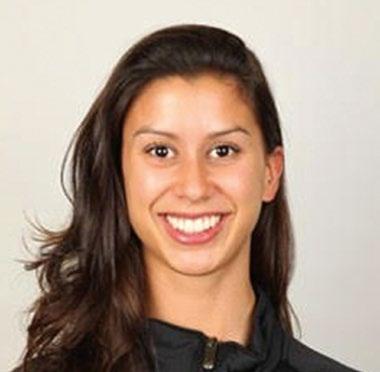
“I was captain of the team in my senior year. Learning how to be a leader on a sports team is a lesson that will stay with me in whatever career I go after. It was one of the hardest seasons I’ve ever played—not just because it was the last but because I wanted to make sure that I left the volleyball program with everything I had out on the court. It was emotional and an amazing experience.”
—Nicole Frias (BA ’16)
Hometown: Marin County, CA
Concentration: Media and Women’s Rights
“I built my NYU community around rowing, but I am excited to use the leadership skills that I have gained to shape and foster new communities in other corners of my NYU experience. As an orientation leader and now as a resident assistant in Founders Hall, I encourage involvement in clubs and organizations to my students and residents. Joining a sports team in college has allowed me to grow as an individual and as a student leader in the larger NYU sphere.”
—Madeleine Perlmutter (BA ’18)
Hometown: Philadelphia, PA
Concentration: Education Studies, Public Policy, Psychology Read more from Perlmutter on page 6.

“I’M A MEMBER OF THE NYU FENCING TEAM. THIS UPCOMING SEASON WILL BE MY FOURTH. I HAVE BEEN REELECTED BY MY TEAMMATES TO BE CAPTAIN FOR 2016–17, MY SENIOR SEASON. I LOVE BEING A MEMBER OF THE FENCING TEAM AS MUCH AS I LOVE BEING A GALLATIN STUDENT. I FIND THAT NYU ATHLETICS AND GALLATIN ARE VERY SIMILAR. EACH ALLOWS STUDENTS TO FIND A COMMUNITY WITHIN A LARGE UNIVERSITY. GALLATIN AND NYU ATHLETICS SEEM NOTHING ALIKE, BUT BOTH HELPED ME FIND A HOME AWAY FROM HOME.”
—Cydney Williams (BA ’17) (pictured right) Hometown: Chicago, IL
Concentration: The Production and Consumption of Culture

“CREW IS WHAT YOU MIGHT CALL AN EARLY-MORNING SPORT, WITH PRACTICE ALWAYS STARTING AT EITHER FIVE OR SIX AM. WHILE IT CAN BE PAINFUL SOMETIMES TO WAKE UP THIS EARLY, IT HAS DEFINITELY HELPED ME STAY ON TOP OF MY STUDIES, SINCE THERE ISN’T ANY TIME TO PROCRASTINATE. IF I DON’T DO MY HOMEWORK IMMEDIATELY, CHANCES ARE I’LL BE TOO TIRED TO DO IT LATER. I LOOK FORWARD TO BEING CO-CAPTAIN OF THE CREW TEAM THIS FALL, ALONG WITH ANOTHER GALLATIN STUDENT, MADELEINE PERLMUTTER. EARLIER THIS SUMMER, I HAD TO REPORT TO JURY DUTY. I HAD ALREADY SIGNED UP FOR A ROWING CAMP THAT WOULD TAKE PLACE AT THE SAME TIME AS THE TRIAL, AND I DID NOT WANT TO MISS AN OPPORTUNITY TO GET SOME EXTRA TRAINING IN. WHEN I EXPLAINED MY DILEMMA TO THE JUDGE, HE SAID, ‘AS A FELLOW ROWER, I UNDERSTAND THE KIND OF COMMITMENT CREW REQUIRES AND WILL THEREFORE DISMISS YOU FROM THIS CASE.’ I NEVER THOUGHT CREW WOULD COME IN HANDY FOR JURY DUTY, BUT IT DID!”
Concentration:
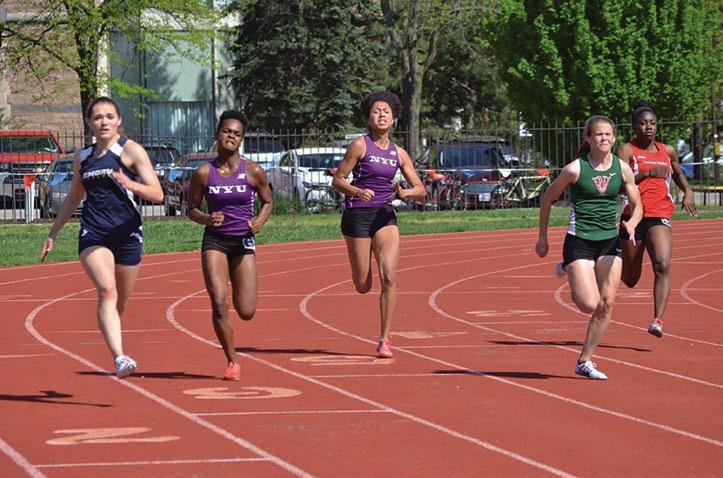
“Devoting my time to this sport for so many years has taught me what it really looks like to put your hard work and dedication into something you really want. Track has pushed my mind and body to limits I never once perceived were possible, and every time I step on the track, I surprise myself. Track has revealed my inner confidence and strength, allowing me to set ambitious goals for myself and know that I can achieve anything I set my mind to.”
—Samantha Scoggins (BA ’19) (pictured middle)
Hometown: Dallas, TX
Concentration: Undeclared; Business, Marketing, Fashion, and Race Studies

“Right after my practice or games, I would normally have my three-hour fashion class that started around 7:40 pm. Each class I would show up wearing softball attire, dirt and sweat still a prominent part of my appearance, even though everyone around was, not surprisingly, fashionable. Those instances where my softball and class schedules clashed made me appreciate how blessed I am to be able to pursue a sport I love and at the same time study and immerse myself in the chic world of fashion and beauty.”
—Rachel Fulton (BA ’17) (pictured left)
Hometown: Carlsbad, CA
Concentration: Fashion and Beauty Marketing

“Playing baseball at NYU has taught me many lessons, including how to overcome physical and mental obstacles throughout the season. After a grueling fall, with many workouts and long days at the field, I learned how to manage my time. Balancing my demanding homework load with being out on the field and in the weight room with my teammates forced me to prioritize areas of my life and dedicate myself to bettering my academic and physical standings.”
—Trevor Francesconi (BA ’19)
Hometown: Saratoga Springs, NY
Concentration: Undeclared; Real Estate and Liberal Arts
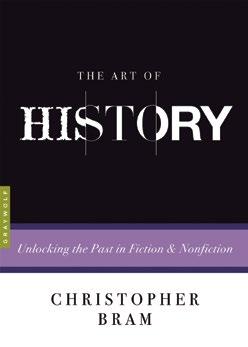
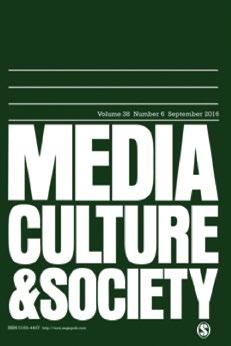
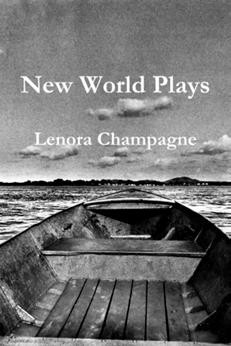

CHRISTOPHER BRAM The Art of History: Unlocking the Past in Fiction and Nonfiction (Graywolf Press, 2016)
The Art of History engages with both fiction and narrative nonfiction to reveal varied strategies of incorporating and dramatizing historical detail. Bram challenges popular notions about historical narratives as he examines both successful and flawed passages to illustrate how authors from different genres treat subjects that loom large in American history, such as slavery and the Civil War. He delves deep into the reasons why War and Peace endures as a classic of historical fiction. Bram’s keen insight and close reading of a wide array of authors make The Art of History an essential volume for any lover of historical narrative.
PAULA CHAKRAVARTTY, editor—A special issue on Infrastructures of Empire for the peer-reviewed journal Media, Culture and Society (Sage Publications, 2016)
The Arab uprisings of 2011 can be seen as a turning point for media and information studies scholars, many of whom newly discovered the region as a site for theories of digital media and social transformation. This work has argued that digital media technologies fuel or transform political change through newly networked publics and new forms of connective action cultivating liberal democratic values. These works have, surprisingly, little to say about the United States and other Western colonial powers’ legacy of occupation, ongoing violence, and strategic interests in the region. It is as if the Arab Spring was a vindication for the universal appeal of Western liberal democracy delivered through the gift of the Internet—social media as manifestation of the “technologies of freedom” long promised by Cold War. The editors propose an alternate trajectory in terms of reorienting discussions of media and information infrastructures as embedded within the resurgence of idealized liberal democratic norms in the wake of the end of the Cold War. Media, Culture and Society looks at the demise of the media and empire debates and the rise of the BRICS (Brazil, Russia, India, China, South Africa) as modes of intra-imperial competition that complicate earlier Eurocentric narratives media and empire. The editors then outline the individual contributions for the special collection of essays.


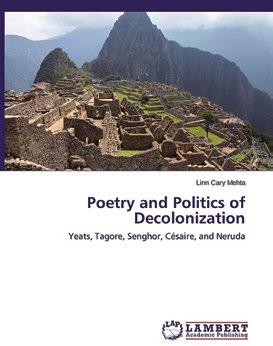
LENORA CHAMPAGNE—New World Plays (NoPassport Press, 2015)
New World Plays is comprised of three lyrical, fantastical works for theater by Lenora Champagne—Isabella Dreams the New World, My Nebraska , and Coaticook—and includes a preface by Julie Hébert, an introduction by Fiona Templeton, and an interview with the author by Jim O’Quinn, the founding editor of American Theatre magazine.
NINA CORNYETZ , co-editor with William Bridges— Traveling Texts and the Work of Afro-Japanese Cultural Production (Lexington Books, 2015)
Traveling Texts and the Work of Afro-Japanese Cultural Production analyzes the complex conversations taking place in texts of all sorts traveling between Africans, African diasporas, and Japanese across disciplinary, geographic, racial, ethnic, linguistic, and cultural borders. Be it focused on the makeup of the blackface ganguro or the haiku of Richard Wright, Rastafari communities in Japan or the black enka singer Jero, the volume turns its attention away from questions of representation to ones concerning the generative aspects of transcultural production. The contributors are interested primarily in texts in motion—the contradictory motion within texts, the traveling of texts, and the action that such kinetic energy inspires in readers, viewers, listeners, and travelers. As our texts travel and travail, the originary nodal points that anchor them to set significations loosen and are transformed; the essays trace how, in the process of traveling, the bodies and subjectivities of those working to reimagine the text(s) in new sites moderate, accommodate, and transfigure both the texts and themselves.
LISA GOLDFARB, co-editor with Bart Eeckhout— Wallace Stevens, New York, and Modernism , paperback edition (Routledge, 2016); co-editor with Bart Eeckhout Poetry and Poetics After Wallace Stevens (Bloomsbury Press, 2016)
The essay collection Wallace Stevens, New York, and Modernism considers the impact of New York on the life and works of Wallace Stevens. Stevens lived in New York from 1900 to 1916 working briefly as a journalist, then going to law school, laboriously starting up a career as a lawyer, getting engaged and married, gradually mixing with local avantgarde circles, and eventually emerging as one of the most exciting and surprising voices in modern poetry. Although he then left the city for a job in Connecticut, Stevens never saw himself as a Hartford poet and kept gravitating toward New
York for nearly all things that mattered to him privately and poetically: visits to galleries and museums, theatrical and musical performances, intellectual and artistic gatherings, shopping sprees and gastronomical indulgences. Recent criticism of the poet has sought to understand how Stevens interacted with the literary, artistic, and cultural forces of his time to forge his inimitable aesthetic, with its peculiar mix of post-romantic responses to nature and a metropolitan cosmopolitanism. This volume deepens our understanding of the multiple ways in which New York and its various aesthetic attractions figured in Stevens’s life, both at a biographical and poetic level.
In Poetry and Poetics After Wallace Stevens, Goldfarb and her co-editor Eeckhout investigate poetry and poetics after the celebrated modernist poet. The ambiguity of the title’s preposition is intentional: while after may refer neutrally to chronological sequence, it also implies ways of aesthetically modeling poetry on a predecessor. Likewise, the general heading of poetry and poetics allows the sixteen contributors to this volume to range far and wide in terms of poetics (from postwar formalists to poets associated with various strands of Postmodernism, Language poetry, even Confessional poetry), ethnic identities (with a diverse selection of poets of color), nationalities (including the Irish Nobel Laureate Seamus Heaney and several English poets), or language (sidestepping into French and Czech poetry).
LINN CARY MEHTA—Poetry and Politics of Decolonization: Yeats, Tagore, Senghor, Césaire, and Neruda (Lambert Academic Publishing, 2015)
Mehta examines the interaction between poetry and politics in colonies and former colonies of England, France, and Spain during the era of decolonization. The years between 1914 and 1950 coincide with the growth of nationalism and form a bridge from colonial to postcolonial literatures. Many of the poets involved with the struggle for decolonization became the voices of their respective nations. At both a political and linguistic level, their poetry reveals a struggle for independence and self-definition. Modernist form plays a decisive role in this struggle. These poets cannot be read independently of their involvement with their countries’ individual struggles for political and cultural freedom. Yeats and Tagore, respectively, redefined Irish and Bengali poetry in the early twentieth century in opposition to the British colonial presence; the poetry of Senghor and Césaire creates the concept of negritude as a reaction to France’s policy of assimilating its colonials; and Neruda, in his poetry, marks out an identity for Chile and Latin America long after independence from Spain that challenges European and North American traditions.

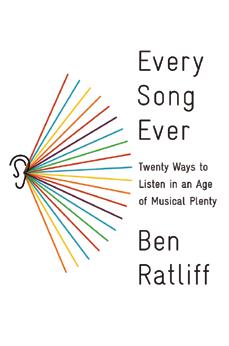

ALI MIRSEPASSI , co-author with Tadd Graham Fernée Islam, Democracy, and Cosmopolitanism at Home and in the World (Cambridge University Press, 2016)—paperback edition
This book presents a critical study of citizenship, state, and globalization in societies that have been historically influenced by Islamic traditions and institutions. Interrogating the work of contemporary theorists of Islamic modernity such as Mohammed Arkoun, Abdul an-Na’im, Fatima Mernissi, Talal Asad, Saba Mahmood, and Aziz Al-Azmeh, this book explores the debate on Islam, democracy, and modernity, contextualized within contemporary Muslim lifeworlds. These include contemporary Turkey (following the 9/11 attacks and the onset of war in Afghanistan), multicultural France (the 2009–10 burqa debate), Egypt (the 2011 Tahrir Square mass mobilizations), and India. Mirsepassi and Fernée critique particular counterproductive ideological conceptualizations, voicing an emerging global ethic of reconciliation. Rejecting the polarized conceptual ideals of the universal or the authentic, the authors critically reassess notions of the secular, the cosmopolitan, and the democractic. Raising questions that cut across the disciplines of history, anthropology, sociology, and law, this study articulates a democratic politics of everyday life in modern Islamic societies.
ANASTASIYA OSIPOVA—Circling the Square: Maidan and Cultural Insurgency in Ukraine (Cicada Press, 2016)
Circling the Square documents the landscape of the 2014 Ukrainian uprising and the political climate that engendered it from many perspectives, ranging from an architectural analysis of Maidan to documentation of an overtly criminal personal performance of solidarity in the Russian Federation to an account of the occupation and attempted reorganization of the Ministry of Culture by a horizontal assembly of cultural workers. Despite the confusion in much of the world media and the international left, these artists, writers, and organizations are decidedly radical, negotiating a strange but critical position that recognizes the rising tide of jingoism that accompanies the threat of invasion as well as the opportunities opened up by Yanukovich’s collapse. The result has a decided lyricism that extends beyond a dry headline or inky propaganda.

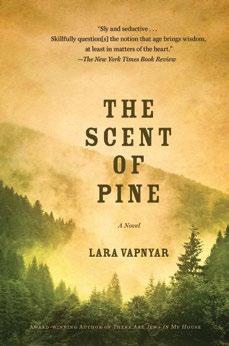

BEN RATLIFF—Every Song Ever: Twenty Ways to Listen in an Age of Musical Plenty (Farrar, Straus and Giroux, 2016)
In Every Song Ever, former New York Times music critic Ben Ratliff reimagines the very idea of music appreciation for our times. As familiar subdivisions like rock and jazz matter less and less and music’s accessible past becomes longer and broader, listeners can put aside the intentions of composers and musicians and engage music afresh, on their own terms. Ratliff isolates signal musical traits— such as repetition, speed, and virtuosity—and traces them across wildly diverse recordings to reveal unexpected connections. When we listen for slowness, for instance, we may detect surprising affinities between the drone metal of Sunn O))), the mixtape manipulations of DJ Screw, Sarah Vaughan singing “Lover Man,” and the final works of Shostakovich. And if we listen for closeness, we might notice how the tight harmonies of bluegrass vocals illuminate the virtuosic synchrony of John Coltrane’s quartet. Ratliff also goes in search of “the perfect moment”; considers what it means to hear emotion by sampling the complex sadness that powers the music of Nick Drake and Slayer; and examines the meaning of certain common behaviors, such as the impulse to document and possess the entire performance history of the Grateful Dead.
ANOORADHA SIDDIQI , co-editor with Andrew Herscher Spatial Violence (Routledge, 2017)
This book poses spatial violence as a constitutive dimension of architecture and its epistemologies as well as a method for theoretical and historical inquiry intrinsic to architecture, and thereby offers an alternative to predominant readings of spatial violence as a topic, event, fact, or other empirical form that may be illustrated by architecture. Exploring histories of and through architecture at sites across the globe, the chapters in the book blur the purportedly distinctive borders between war and peace, framing violence as a form of social, political, and economic order rather than its exceptional interruption. Regarding space and violence as co-constitutive, the book’s collected essays critique modernization and capitalist accumulation as naturalized modes for the extraction of violence from everyday life. Focusing on the mediation of violence through architectural registers of construction, destruction, design, use, representation, theory, and history, the book suggests that violence is not only something inflicted upon architecture, but also something that architecture inflicts. In keeping with Walter Benjamin’s formulation that there is no document of civilization that is not also a document of barbarism, the book offers spatial violence as another name for architecture itself.
LARA VAPNYAR The Scent of Pine (Simon & Schuster, 2015); Still Here (Hogarth, 2016)
Though only thirty-eight, Lena, the protagonist of Vapnyar’s The Scent of Pine, finds herself in the grips of a midlife crisis. She feels lost in her adoptive country, her career is at a dead end, and her marriage has spiraled into apathy and distrust—it seems impossible she will ever find happiness again. But then she strikes up a precarious friendship with Ben, a failed artist turned reluctant academic, who is just as lost as she is. They soon surprise themselves by embarking on an impulsive weekend adventure, uncharacteristically leaving their responsibilities behind. On the way to Ben’s remote cabin in Maine, Lena begins to talk, for the first time in her life, about the tumultuous summer she spent as a counselor in a Soviet children’s camp twenty years earlier, when she was just discovering romance and her own sexuality. As Lena opens up to Ben about secrets she has long kept hidden, they begin to discover together not only the striking truths buried in her puzzling past, but also more immediate, passionate ones about the urgency of this short, stolen time they have together.
In her latest novel, Still Here, Vapnyar follows the intertwined lives of four immigrants in New York City as they grapple with love and tumult, the challenges of a new home, and the absurdities of the digital age. Vica, Vadik, Sergey, and Regina met in Russia in their school days but remained in touch and now have very different American lives. Sergey cycles through jobs as an analyst, hoping his idea for an app will finally bring him success. His wife, Vica, a medical technician struggling to keep her family afloat, hungers for a better life. Sergey’s former girlfriend Regina, once a famous translator, is married to a wealthy start-up owner and spends her days at home grieving over a recent loss. Sergey’s best friend, Vadik, a programmer ever in search of perfection, keeps trying on different women and different neighborhoods, all while pining for the one who got away. As Sergey develops his app—calling it Virtual Grave, a program to preserve a person’s online presence after death—a formidable debate begins in the group, spurring questions about the changing perception of death in the modern world and the future of our virtual selves. How do our online personas define us in our daily lives, and what will they say about us when we’re gone?
For our second annual Alumni College in June 2016, alumni gathered for an afternoon of scholarship, conversations, and camaraderie. Gallatin professors led seven fully booked seminars and attendees were welcomed to a luncheon with the Gallatin deans and an all-Gallatin reunion and wine reception.
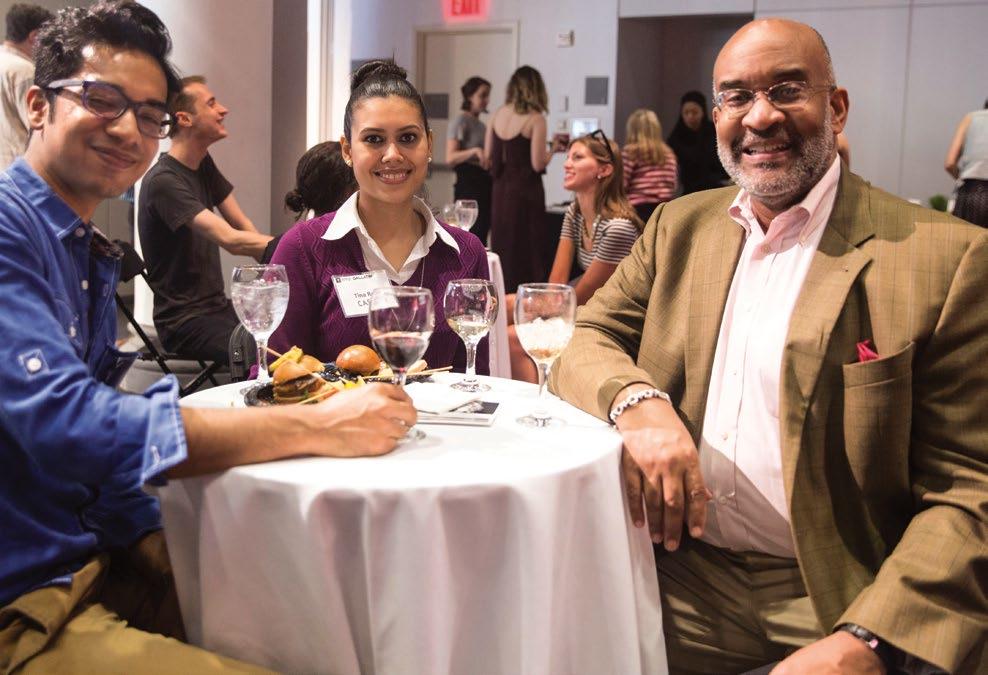
IT GAVE ME AN OPPORTUNITY TO BE ABLE TO BLESS MY PROFESSORS FOR SENDING ME OUT IN THE WORLD IN A MORE PREPARED STATE.” —SCOTT FRIED (BA ’85)
THERE WAS NOTHING I WOULD NOT RECOMMEND ABOUT IT. FROM THE MASTERFUL PROFESSORS TO THE THOUGHT-PROVOKING CLASS TOPICS TO THE QUALITY FOOD, IT WAS GREAT TO BE BACK IN THE GALLATIN COMMUNITY, BUILDING, AND SPIRIT/AMBIENCE.”
—ERIN KIM (BA ’15)

Michael Dinwiddie: “From August to Lin-Manuel: The Ground on Which They Stand”
Stephen Duncombe: “Marx, Alienation, and Commodity Fetishism”
Louise Harpman: “Thinking About Design Thinking”
Bella Mirabella: “Parents and Children”
Stacy Pies: “The Political Imagination”
SAVE THE DATE
Third Annual Alumni College Saturday, June 3, 2017 Registration will open in spring 2017.
Peter Rajsingh: “Arms, Tarps, and Tulips: Crises and Financial Transgressions Present and Past”
George Shulman: “Politics and Elections”

It’s never been easier to help current students: Go All In.
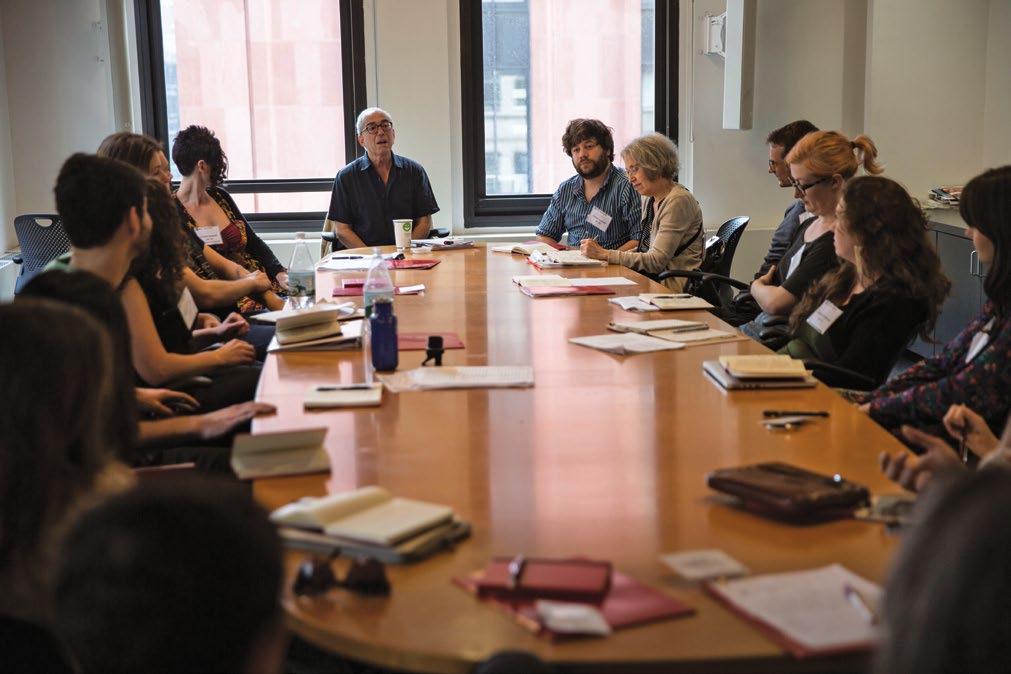
I’VE HAD A GREAT TIME TWO YEARS IN A ROW: MET NEW PEOPLE, RECONNECTED WITH OLD CLASSMATES, AND WAS EXPOSED TO NEW IDEAS AND TOPICS.” —RACHEL MONFRE (BA ’14)
Arhlene Flowers (BA ’77), associate professor of integrated marketing communications at Ithaca College, published Global Writing for Public Relations: Connecting in English With Stakeholders and Publics Worldwide (Routledge, 2016).
Jane Rosenthal (BA ’77) was honored by Women in Film with the Crystal Award for Excellence in Film for her work as Tribeca Enterprises executive chair, and on Wag the Dog, Meet the Parents, and All We Had
Dan Moses Schreier (BA ’79) received a Drama Desk Award
nomination for Outstanding Sound Design in a Musical for American Psycho
Theater for the New City presented Wendy Osserman Dance Company, founded by Wendy Osserman (MA ’82), in Quick Time for the company’s 40th anniversary in April 2016.
Photographer and philanthropist
Bonnie Lautenberg (BA ’87) celebrated the passing of a chemical safety bill named in honor of her husband, the late senator Frank Lautenberg. The Frank R. Lautenberg Chemical Safety for the 21st
I WILL SAY THE FACT THAT THIS WAS OFFERED FOR FREE TO ALUMNI IS A HUGE BONUS. THIS FELT LIKE A REAL GIFT, AN ENTHUSIASTIC EMBRACE OF THE ALUMNI COMMUNITY, AND THAT SENSE GAVE THE WHOLE PROGRAM A VERY WARM, OPEN, COLLABORATIVE VIBE.” —MIRANDA SHERMAN (GAL BA ’09, TISCH MA ’14)

Century Act requires the Environmental Protection Agency to test both new and existing chemicals for safety and allows the agency to ban toxic substances without worrying about the cost to industry. After signing the bill, President Obama stated, “Bonnie carried the torch on this issue, cementing her late husband’s legacy as one of our nation’s finest environmental champions.”
Amy Guggenheim (MA ’86) has launched the consulting firm Intrinsic Value.
Eleonora Swarcewicz Rezek (MA ’88), proprietor of the Historic Jacob Hill Inn in Providence, Rhode
Island, is celebrating fifteen consecutive years of running a property rated four diamonds by AAA.
John DeLucie (BA ’89) opened his new restaurant, Bedford & Co., in New York City’s Renwick Hotel.
Ann Moradian (BA ’91) joined fifteen experts in dance, neurology, and philosophy to explore conscious movement and the movement of consciousness in the Conscious Body IV. This research project of Labodanse and the Creation Laboratory culminated in an immersive
performance for a visiting audience at La Briqueterie. Currently focused on collaborative, interdisciplinary, and educational projects, she has received support from the Centre national de la danse, Bilingual Acting Workshop, L’Art au Garage, and InterAction.
(Martha) Suki John (MA ’91) choreographed the narrative ballet Havana Love Letters as part of the 2016 Cuban Arts Match.
Nicholas Levin (BA ’91) received a 2016 MAC Award nomination for best revue for Somewhere in This Song
Author and visual artist Stephen C. Bird (BA ’92)’s third novella, Any Resemblance to a Coincidence Is Accidental, was published in November 2015 by Hysterical Dementia. His other works include Hideous Exuberance (2009, 2013) and Catastrophically Consequential (2012). From 1997 through 2002 he was a producer and performer at Collective Unconscious on the Lower East Side. He now resides in Toronto, Ontario.
The New Group’s artistic director, Scott Elliott (BA ’93), directed Buried Child, by Sam Shepard and starring Ed Harris, which opened Off-Broadway on February 17, 2016.
Kathy Posin (MA ’94)’s dance company’s three-work program opened the Harkness Dance Festival at the 92nd Street Y in February 2016.
Leonard Kohen (BA ’95) has been named partner at Kurzon Kohen & Stancati LLP.
Entertainment attorney Melisse Lewis (BA ’95) moderated “The Deal-Making Process: From Feature Film, Reality TV, and Specials to Web Series and Indie Filmmaking” at the Digital Hollywood Summit, held in Los Angeles, California, in May 2016.
Maryrose Wood (BA ’96) was named a winner of a 2016 BRIO Award for Literary Arts from the Bronx Council of the Arts.
Gabrielle Karan De Felice (BA ’97), daughter of fashion designer Donna Karan, spoke with the New York Observer about her restaurant business, her forthcoming hotel, and life in the Hamptons for the June 21, 2016, article “Gabby Karan De Felice Is Vying to Become the Ultimate Hamptons Hostess.” De Felice is a cofounder, with husband Gianpaolo De Felice, of Tutto Il Giorno, a restaurant with locations in Southampton and Tribeca, and a forthcoming outpost in Montauk scheduled for 2017. In the summer of 2016, she cohosted Super Saturday, a shopping event started by her mother, in support of the Ovarian Cancer Research Fund.
Artist and Fridge Art Fair founder Eric Ginsburg (BA ’98) participated in the Fridge Art Fair: The Fridge Freeze Project, held at the Angel Orensanz Foundation in New York City in May 2016.
Playwright, activist, and educator Kristoffer Diaz (GAL BA ’99, TSOA MFA ’02) was named the first recipient of the Temple University Department of Theater’s Playwright Residency Program. Diaz has been commissioned to write a full-length play, which will receive a full production during the 2016-17 season. He joined the Gallatin faculty on a full-time basis in the fall of 2016.
Legacy Lake, a play by poets Mercedes Muñoz and Susan Anglada Bartley (BA ’00), explores ancestry, spirituality, race, class, and gender, and the first reading took place in June at Taborspace Theater in Portland, Oregon.
Daniela Mendelsohn (BA ’00) launched DocYourStory, a boutique production company specializing in personalized documentary films that capture life stories.
Francis Palazzolo (MA ’00) led a panel discussion with artists during the Sole Exchange exhibit at Open Source Gallery in Brooklyn in April 2016. Palazzolo cofounded the gallery and currently serves as director and curator.
Keli Goff (BA ’01) was nominated for an NAACP Image Award for Outstanding Writing in a Dramatic Series for cowriting the episode “Sparrow” for the BET drama Being Mary Jane. On March 31, 2016, she moderated a Salon Series at the NYU Washington, DC, Center that featured the award-winning authors Zadie Smith and Jeffrey Eugenides. (See page 4 for a conversation between Goff and David D. Burstein (BA ’12.)
Alysa Nahmias (BA ’01) produced No Light No Land Anywhere, which premiered at the Los Angeles Film Festival in June 2016.
Jarett Kobek (BA ’02) published the book I Hate the Internet (We Heard You Like Books, 2016).
Ivan Askwith (BA ’03) was named one of Fast Company ’s “100 Most Creative People in Business” for 2016.
Justine van der Leun (BA ’03)’s book We Are Not Such Things: The Murder of a Young American, a South African Township, and the Search for Truth and Reconciliation, an account of South Africa’s Truth and Reconciliation Commission, was published by Spiegel & Grau in 2016.
Danielle Birrittella (BA ’04) released her first EP, Tiny Oceans, in collaboration with Manimal Records.
Greg Bonsignore (BA ’05) wrote the book and lyrics for Gorgonzola: A Cautionary Sicilian Tale. The show began at the BMI Workshop and was presented in January 2016 by Theatre Now New York as part of the Third Annual Sound Bites 10-Minute Musical Theatre Festival. The show won Best Musical, Best Lyrics, Best Music, Best Actor, and Best Actress. Ramsey B. Prather (BA ’05) has joined the law firm of Butler Wooten & Peak LLP as an associate in the
Atlanta, Georgia, office. He graduated from NYU magna cum laude in 2005 and in 2010 magna cum laude from Tulane University Law School, where he served as editor in chief of the Tulane Law Review. His practice areas will include False Claims Act litigation, business torts, and personal injury.
Jordana Rothman (BA ’05) coauthored the cookbook Tacos: Recipes and Provocations (Clarkson Potter, 2015), which was honored with a 2015 IACP Cookbook Award from the International Association of Culinary Professionals, and was nominated for three IACP awards and a James Beard Award for Best Single Subject Cookbook.
“boxes” that have been created over time, at the Haptic Vail/Present Reaction opening reception at Hot Wood Arts in Brooklyn, New York.
After Molly Quammen (BA ’07) graduated with her MA in Art Education from Brooklyn College, she moved to Vancouver, Washington, to teach visual art to grades six through eight in a public middle school. “I knew my undergraduate concentration in Semiotics would be a perfect fit for something,” she notes.
On September 9, 2016, Julian Cyr (BA ’08) was elected the Democratic candidate for the Massachusetts State Senate. (Read more about Cyr on page 12.)

Doree Simon (BA ’11) was the lead producer, along with ESPN Films and FiveThirtyEight.com, for the documentary short A More Perfect Union The film covers the buildup to Obama’s speech on race during his 2008 presidential campaign, which came as a result of the Reverend Jeremiah Wright controversy. For the film, key members of Obama’s staff, including campaign adviser David Axelrod and speechwriter Jon Favreau, were interviewed to see how the controversy and speech affected the inner workings of the campaign. A More Perfect Union was included in the 2016 Tribeca Film Festival and shown along with a panel that included FiveThirtyEight’s creator, Nate Silver. The film is available for viewing online at fivethirtyeight.com.
Poet and playwright Chinaka Hodge (BA ’06) is writing Minors, a TV show commissioned by MACRO, a start-up that will focus on developing content for multicultural audiences.
Spencer Somers (BA ’06) has been promoted to creative director at Standard Time, where he’s served as a creative problem solver for such clients as Starbucks, CVS Pharmacy, Too Faced Cosmetics, and olloclip.
Annie Dressner (BA ’06) played at New York City’s Rockwood Music Hall in April 2016.
Frances F. Denny (BA ’07) was named a 2016 Deutsche Bank Americas Foundation Fellow in Photography by the New York Foundation for the Arts. Denny was also cited in “PDN’s 30: New and Emerging Photographers to Watch.”
TaskUs, a company cofounded by Bryce Maddock (BA ’07), was named to Inc.com’s 2016 “30 Under 30” list.
On July 23, 2016, Katie Loughmiller (BA ’07) performed Perception, an exploration of 21st-century notions of identity, origin, and labeling through exploring how we perceive others and ourselves in terms of the racial/ethnic
Photographer Jesse Dittmar (BA ’08) published Two, his first book of celebrity portraits.
Ben Dreyfuss (BA ’08) starred as young Bernie Madoff in the 2016 ABC miniseries Madoff
Doron Max Hagay (BA ’08) released new episodes of Monica, which are now streaming on the show’s website and Vimeo channel. Alumna Kate Berlant (BA ’09, TSOA MFA ’11) appears in Part Two.
Ross McGraw (BA ’08) is the director for new business and partner marketing at Viacom in New York.
Stephanie Susberich (BA ’08) earned a master’s degree in Classical Vocal Performance from New Jersey City University and is currently participating in the young artist program at the New England Opera Intensive. In the summer of 2016, she joined the Baroque Opera Workshop at the Queens Conservatory.
Yisrael Welcher (BA ’08) is currently a 2016 Docs in Progress Fellow for his work producing KolHanashim. Told through women’s perspectives, the film explores the balancing act between maintaining ethnic identity and the
THREE ALUMNI WERE AWARDED 2016-17 NEW YORK FOUNDATION OF THE ARTS
Frances Denney (BA ’07)—Photography
Matthew Morrocco (BA ’12)—Photography
Max Vernon (GAL BA ’10, TSOA MFA ’13)—Music and Sound
pressures of cultural assimilation into American society.
Molly Dunn (BA ’10) performed as Rosa Bud in South Orange Performing Arts Center’s run of The Mystery of Edwin Drood in July 2016.
Rooney Mara (BA ’10) was nominated for Best Female Lead at the 2016 Film Independent Spirit Awards for her role in Carol
Gina Pollack (BA ’10) was honored by UC Berkeley School of Journalism’s 2016 Excellence Awards with the North Gate Award for Excellence in Video Reporting and Production for her work on Undue Burden.
Max Vernon (BA ’10, TSOA MFA ’13) won a 2016 New York Foundation for the Arts fellowship for Music and Sound. On March 6, 2016, he spoke at Adelphi University about his desire to create provocative musicals with a social conscience. Vernon’s musical The View UpStairs was inspired by the 1973 arson attack on the New Orleans gay bar the UpStairs Lounge that killed thirty-two people, the most deadly attack on the American LGBTQI+ community until the shooting at the Pulse nightclub in Orlando, Florida, in June 2016. In July 2016, at the Rattlestick Theatre in New York, Vernon held The View UpStairs: A Benefit Concert for Orlando to raise money for Equality Florida, an organization that works directly with the families affected by the shooting.
Mary Callahan (BA ’14) earned a role as part of an eight-woman ensemble in the first national tour of Bullets Over Broadway
Julia Leffler (BA ’11) has written and produced webisodes for her show The Department of Moving On. An afterlife office comedy, the show follows the angels of death at Morbius Inc. as they tackle cases of the recently deceased. Jonathan Reitzel (BA ’11) directs. The webisodes can be found on YouTube.
Christina Liang (BA ’11) graduated from the American Conservatory Theatre with an MFA in Acting.
Ivan Rahman (BA ’11), an MPP candidate at Harvard’s John F. Kennedy School of Government, was named a 2015 Education Pioneers Fellow. As a fellow, he drives innovation in three schools, impacting nearly eight hundred students and ninety teachers. His piece “Four Must-Knows for Every Education Entrepreneur and Intrapreneur” was recently published by the Education Pioneers blog.
Gabriel Schoenberg (BA ’11)’s company, Graff Tours, was awarded the Trip Advisor Certificate of Excellence 2016.
Christopher Gallant (BA ’12)’s debut LP, Ology, came out in April 2016 on Mind of Genius and was included in Entertainment Weekly ’s “The 25 Best Albums of 2016 (So Far).” He made his Coachella debut on the first day of the 2016 festival.
Michelle Persad (BA ’12) wrote two articles, “The Average Woman Puts 515 Synthetic Chemicals in Her Body Every Day Without Knowing” and “I Stopped Putting Toxic Chemicals in My Body and Here’s What Happened,” for The Huffington Post Persad and fellow alumna Jessica Assaf (BA ’12) are cofounders of the beauty brand Raw Is Everything.
Ryan Casey (BA ’13) presented solo and duet material during “Stampede” at Symphony Space in January 2016 and a solo set during “The Dancing Man” as part of the 92nd Street Y’s Fridays at Noon. Both performances incorporated “For Fred,” a poem he wrote his senior year, which first appeared in the Gallatin Review
Sharon E. Cooper (MA ’13)’s play Believin’ will be published by Smith & Kraus in The Best 10-Minute Plays 2016. She recently completed her first short comedic film, The Seven Men of Hanukkah, and she will have a reading of her romantic comedy feature that she wrote at Gallatin, The Golden Age of Kali, in spring 2016.
Sudanese American poet Safia Elhillo (BA ’13) has been named the winner of the 2016 Sillerman First Book Prize for African Poets for her manuscript Asmarani. (See Elhillo’s poem “self-portrait in case of disappearance” on page 5.)
Geraldine Inoa (BA ’13) was selected as one of ten playwrights for the Public Theater’s 2016-17 Emerging Writers Group.
Brandi Lupo (BA ’13) earned a JD degree from the University of Pennsylvania Law School in May 2016.
Benjamin Mintzer (BA ’13) presented his paper “(En)Gendering Aesthetics” at the University of Oregon Trans* Experience in Philosophy Conference in Eugene, Oregon, in May 2016.
Matthew Morrocco (BA ’12) won a 2016 New York Foundation for the Arts fellowship for photography.
Mitali Thakore (BA ’13) earned a master’s of public health degree at Emory University with a Health Education focus. She started a job as a project manager in the quality department at Lenox Hill Hospital.
Uncaged, a film directed by Daniel Robbins (BA ’14) and written by Robbins and Mark Rapaport (BA ’16), is available for streaming on Netflix.
Emma Kate (Schlamme) (BA ’15) performed at Pianos in NYC in July 2016 with fellow alum Rowan Spencer (MA ’17).
The Crazy Ones, a new pop-rock musical with music and lyrics by Zack Zadek (BA ’15), was performed at 54 Below in New York in March 2016.
Claire Leonard Horn (MA ’15) will join the faculty at Birkbeck, University of London, in the fall, teaching undergraduate criminology and legal theory.
Giovanna Olmos (BA ’16) was included in the Creators Project article, “5 Painters You’ll Be Hearing
about in 2016” on artists who were named the 2016 “brightest talents of painting.”
In 2016, Storm Ritter (BA ’16) opened the art gallery and store Graey Studios on Greenwich Village’s Eighth Street, where she sells her own art and clothing, made from fabrics based on her paintings, along with a curated selection of vintage clothing.
Keng Hooi (Mike) Tan (BA ’16) is the founder and director of the Rubber Factory, a contemporary art gallery specializing in photo-based works by emerging artists, on Ludlow Street in New York.

Gallatin student Karlie Kloss and Gallatin grad Christy Turlington (BA ’99) attended the 2016 White House Correspondents’ Dinner.
Correction from Gallatin Today ’s Fall 2015 issue: Edward C. Davis (BA ’04) was not a coeditor on The Places We’ve Been as previously stated.
We would love to hear about your successes and keep you informed. If you’re not receiving emails from Gallatin, please use the alumni update form on our site, which can be found at gallatin.nyu.edu/alumniupdate. There, you can send us your email and mailing address information and let us know about your accomplishments.
Your alumni community has established groups in New York City; Los Angeles; San Francisco; Washington, DC; and Boston, and keeps growing. Stay in touch to receive information and invitations to receptions, performances, faculty lectures, and more. If you’d like to volunteer in your region, please contact Director of Alumni Relations Lauren Nisenson at gallatin.alumni@nyu.edu.
No matter where you are, stay in touch with your fellow Gallatin grads using Facebook, Instagram, and Twitter.
Facebook/NYUGallatin • Facebook/GallatinLA • Facebook/GallatinSF Instagram @NYUGallatin Twitter @NYUGallatin


It’s never been easier to help current students: Go All In GALLATIN.NYU.EDU/ALUMNI #GALLATINALLIN
Gallatin alumni play an instrumental role in the future of the School. Whether it’s through Gallatin’s Annual Fund, scholarship fund, the Albert Gallatin Founder’s Fund, or the general fund for NYU, your gift will change the lives of students for years to come. You can make your gift online, at www.nyu. edu/giving, or you can discuss any special gift arrangements by contacting Gallatin Development Director Maureen Bannon at maureen.bannon@nyu. edu or (212) 998-6996.
Susanne L. Wofford
Lauren Nisenson Director of Alumni Relations
Fabio Cutró Designer
Em Watson (BA ’16) Cover, Feature Story, Alumni College Photographer

